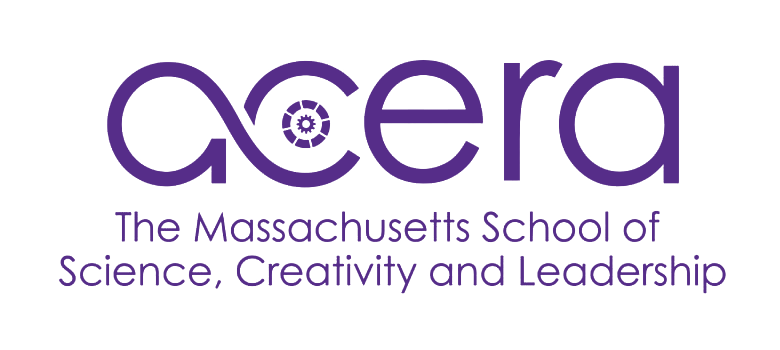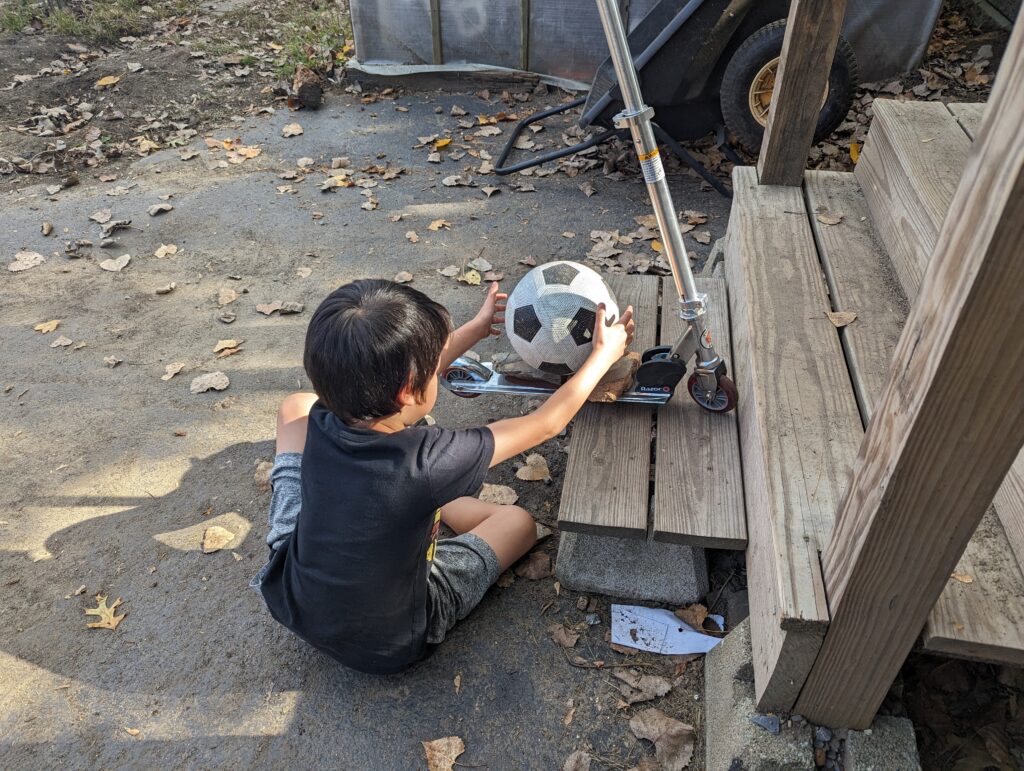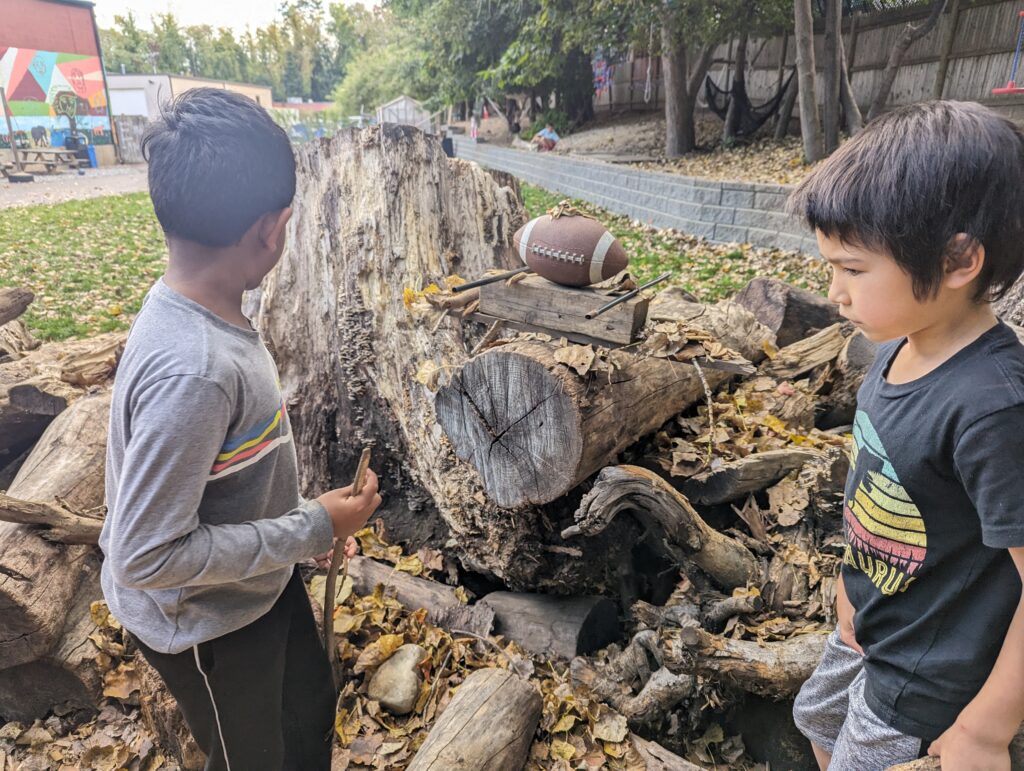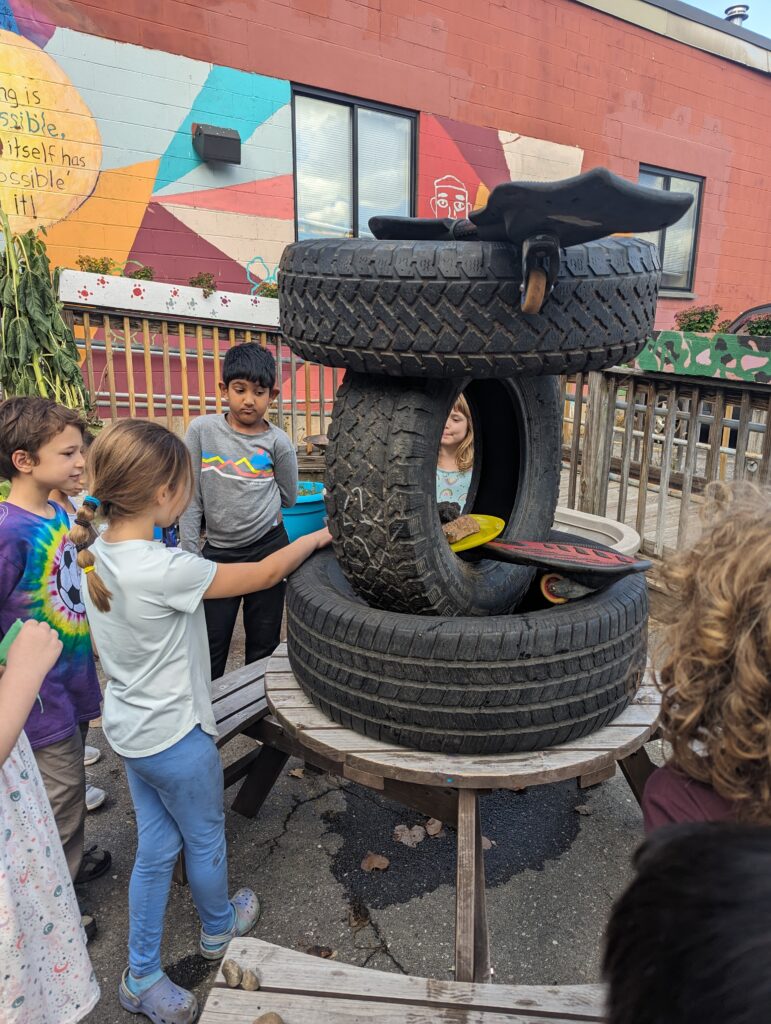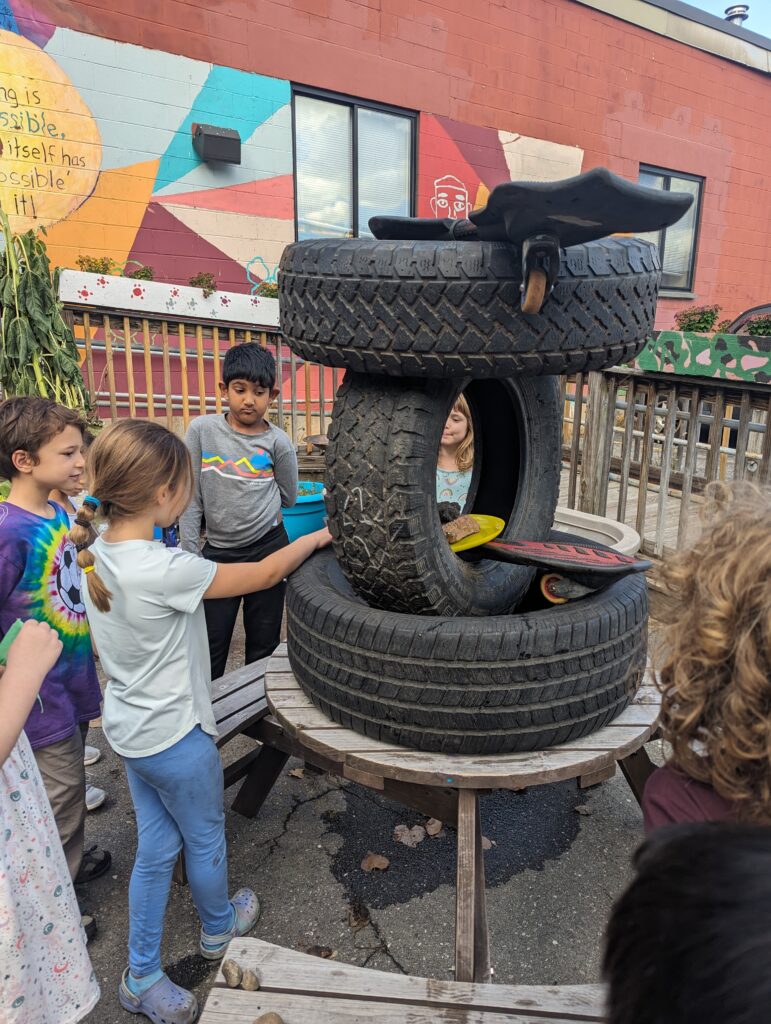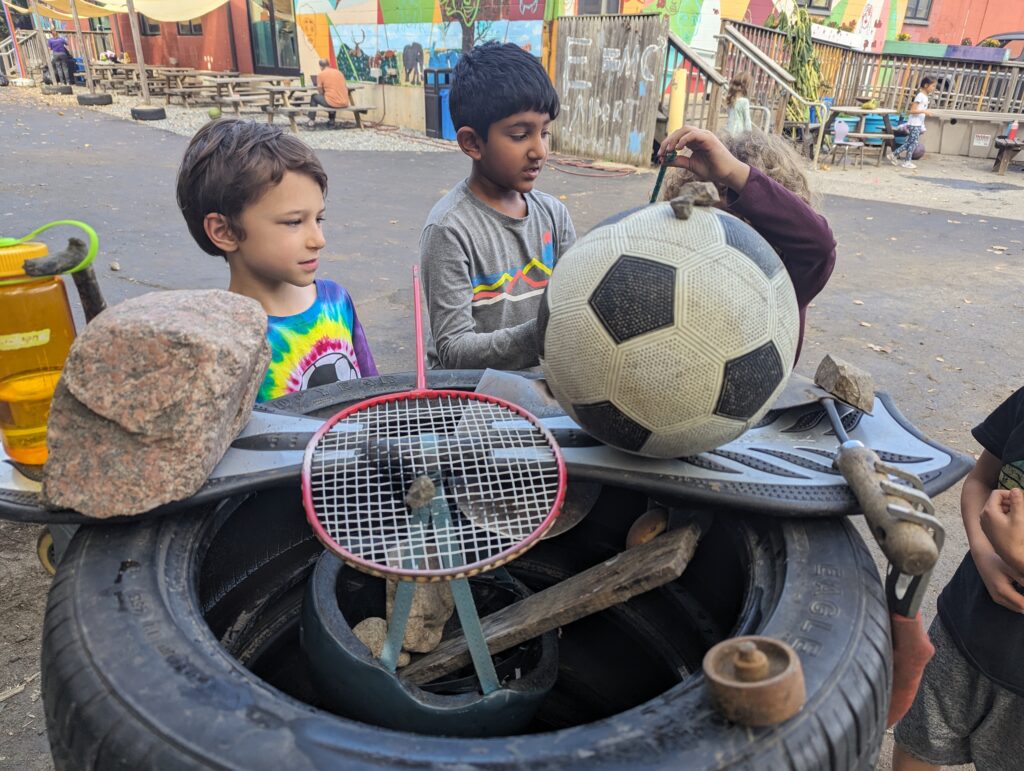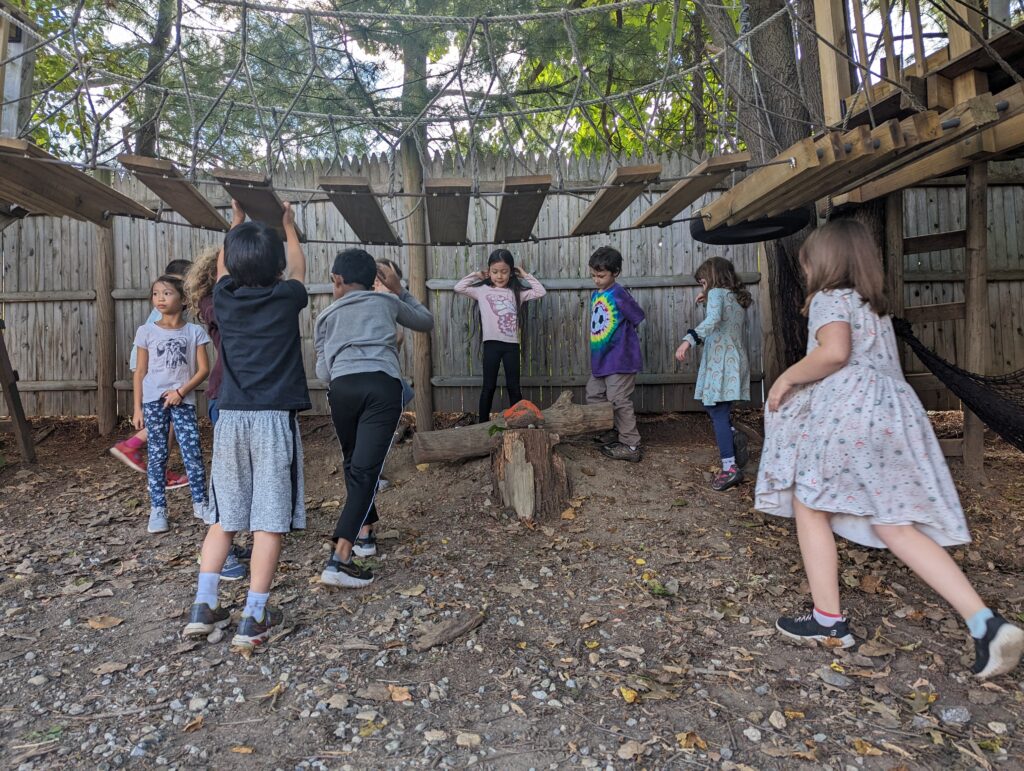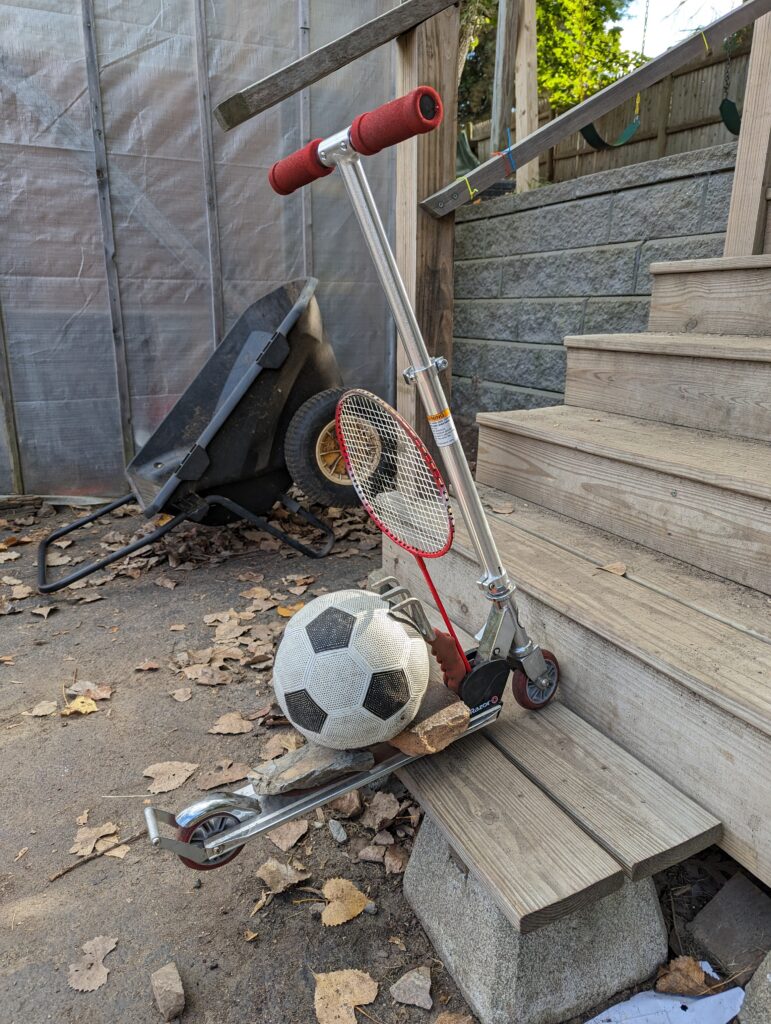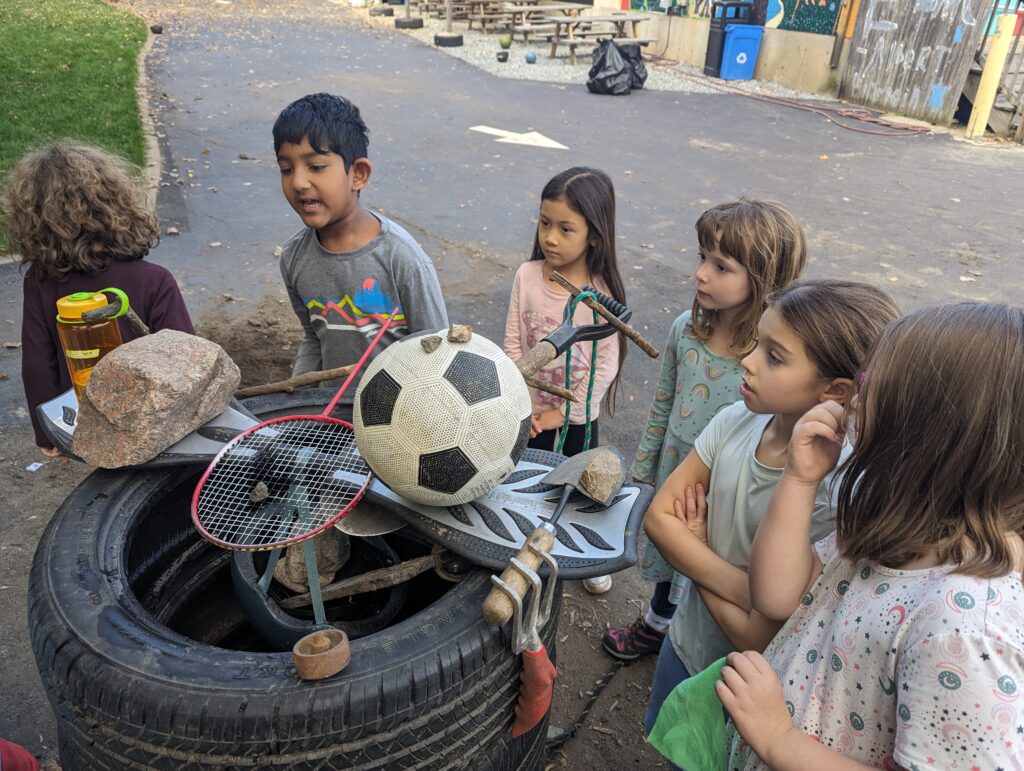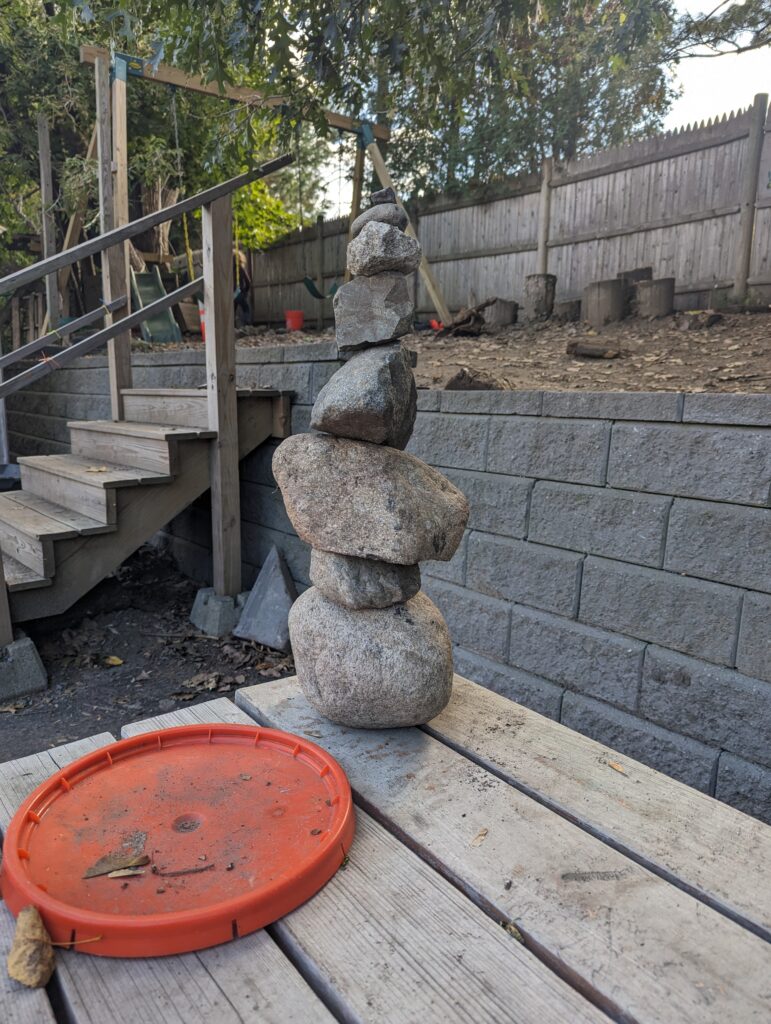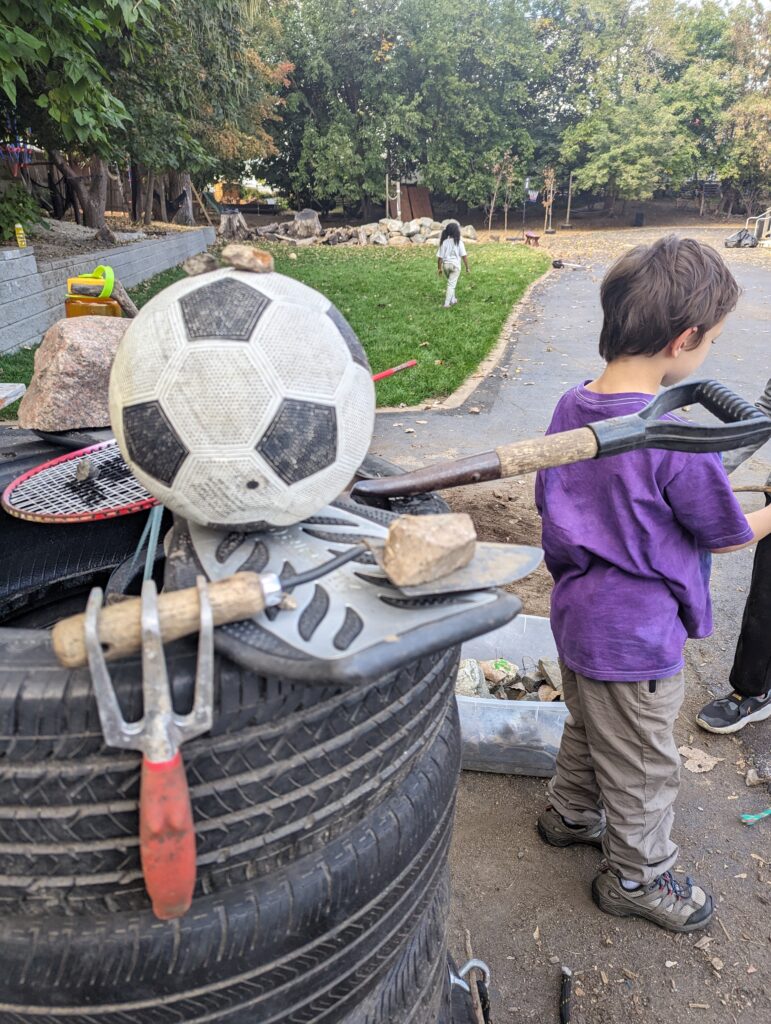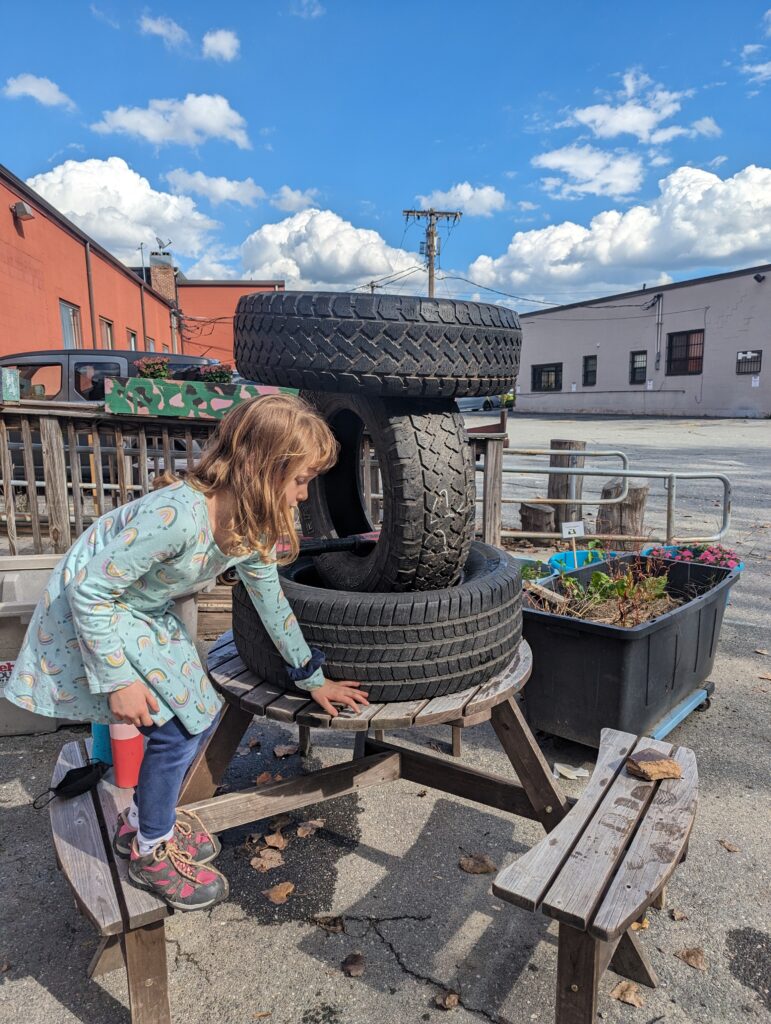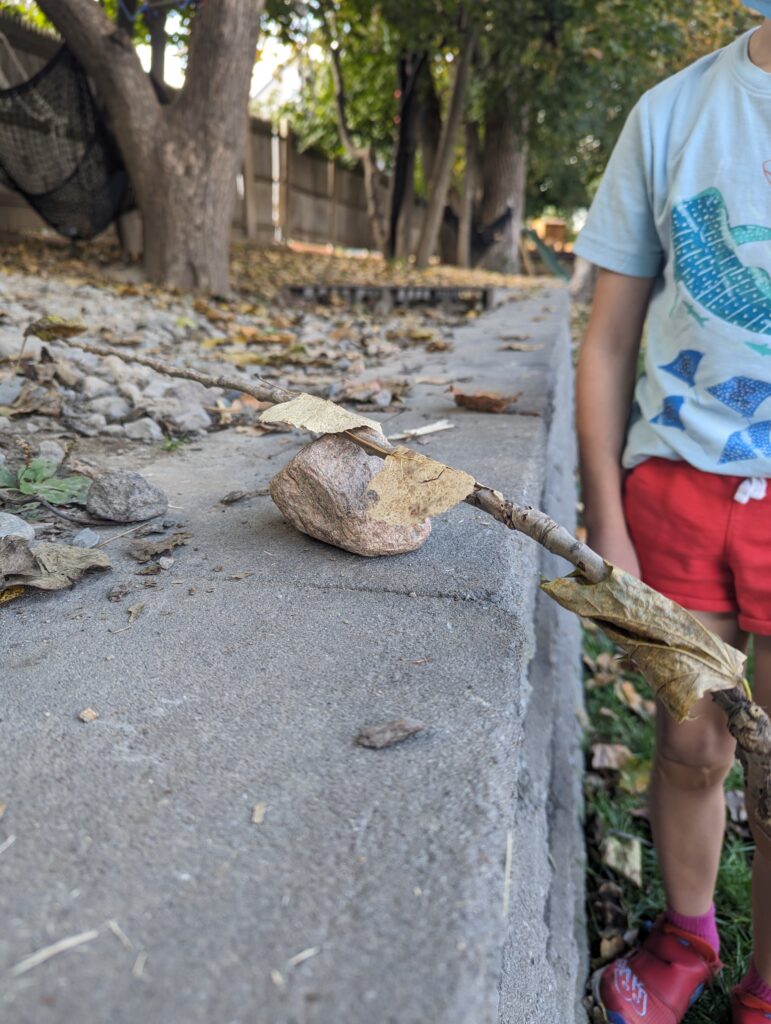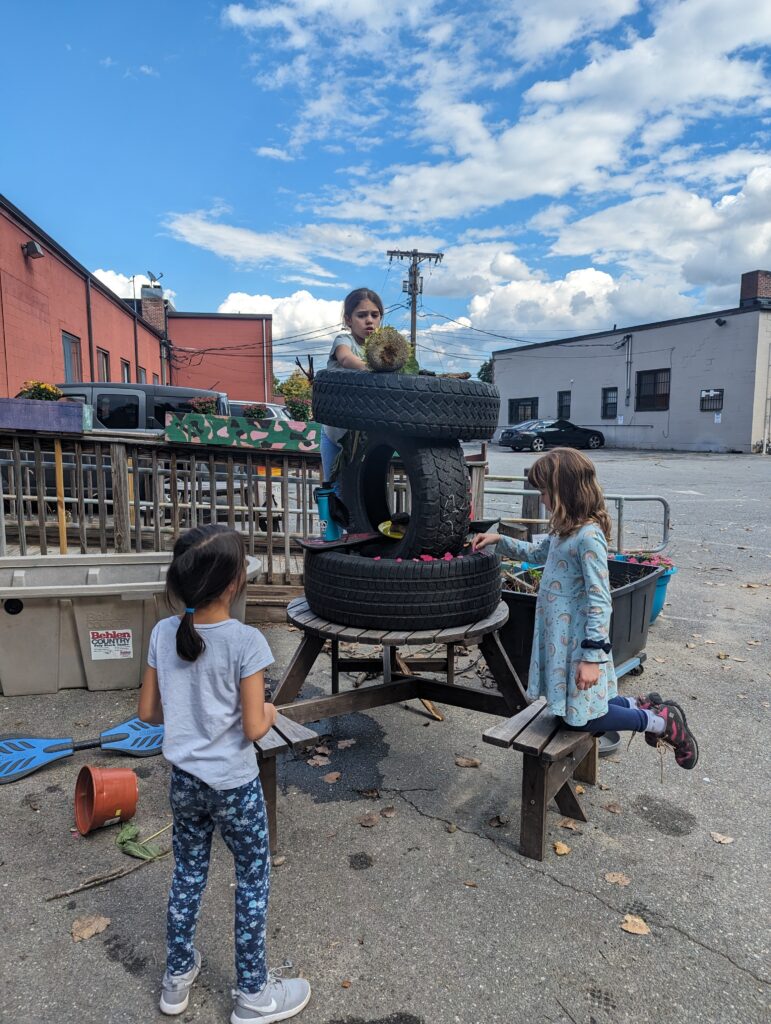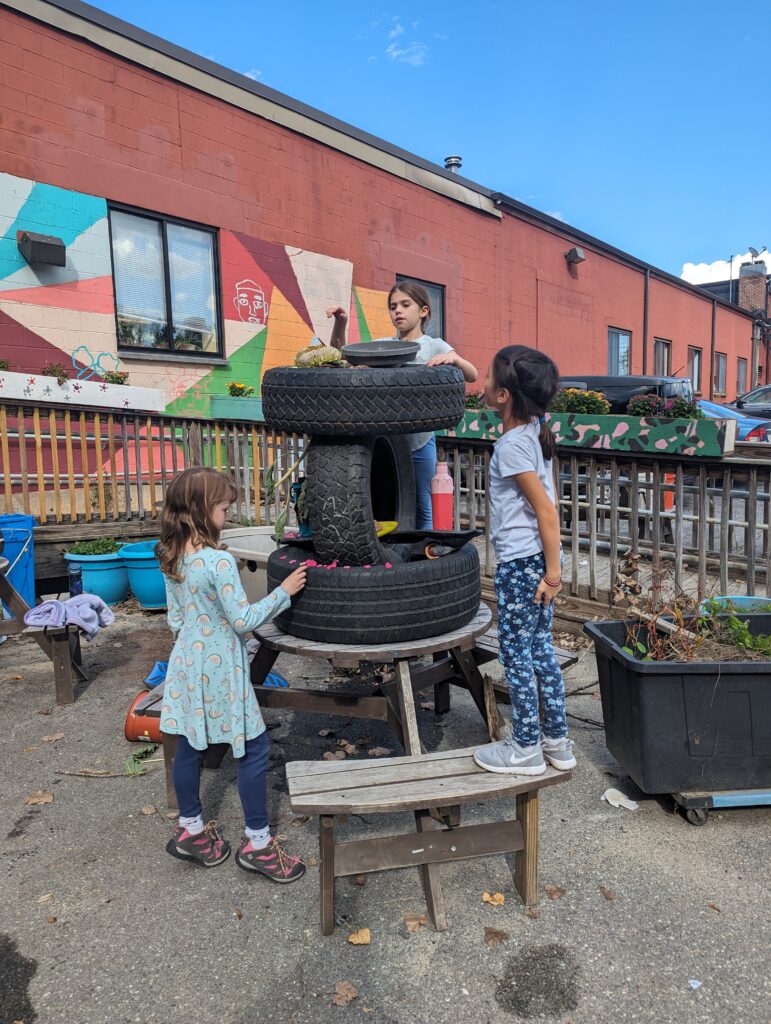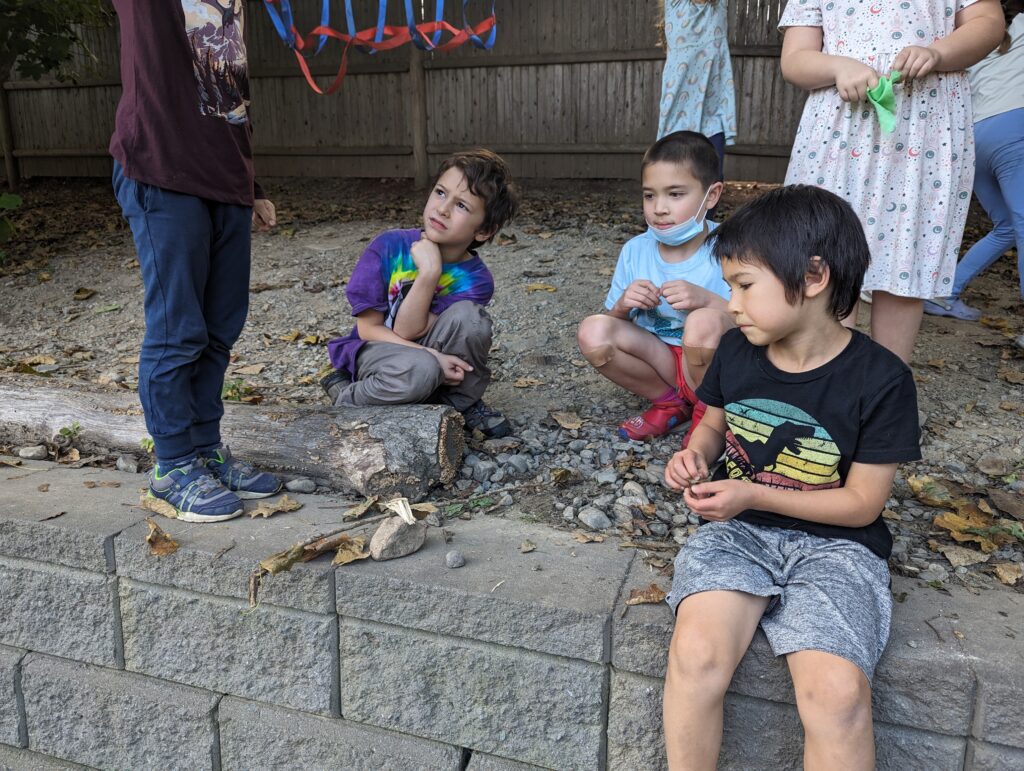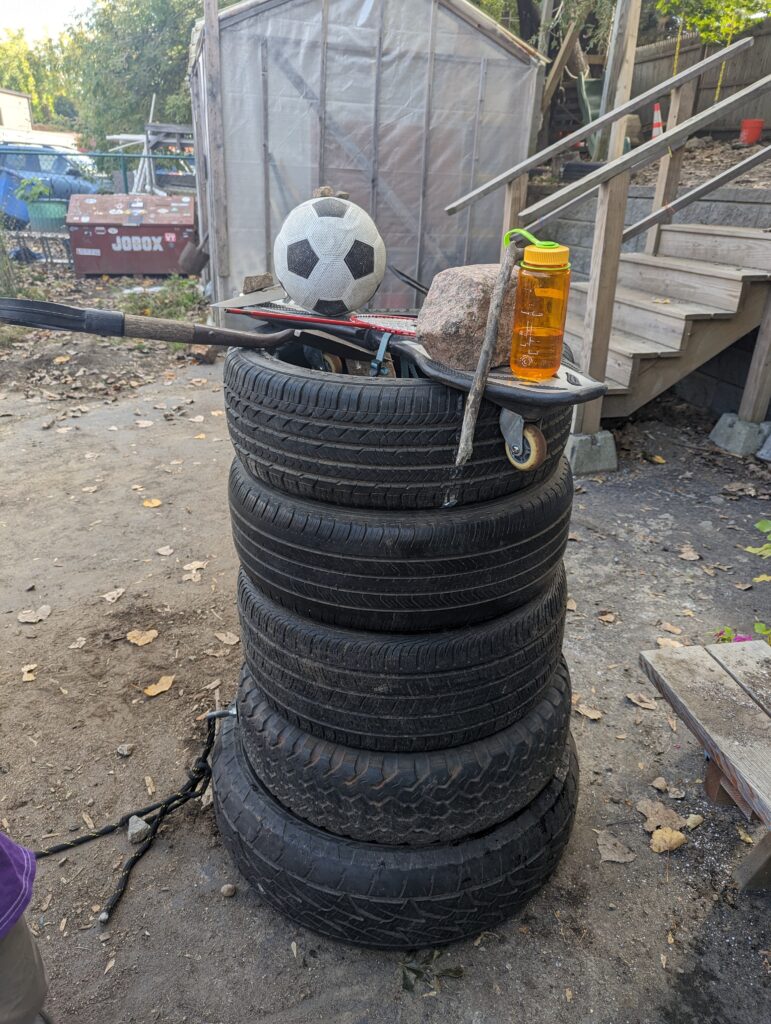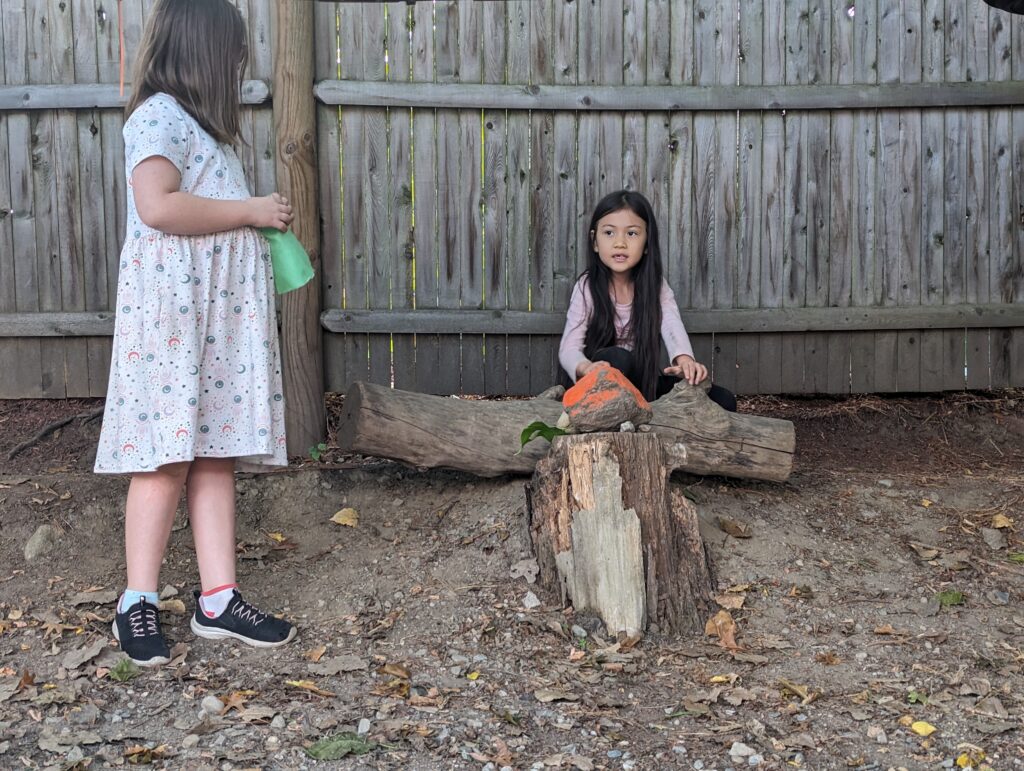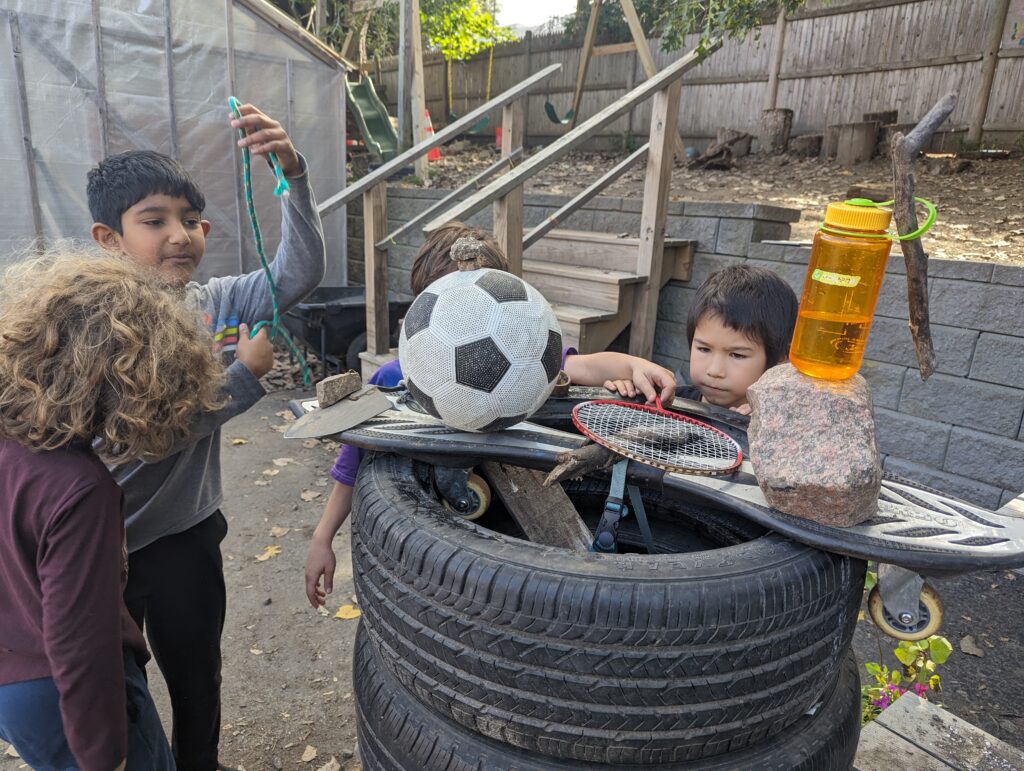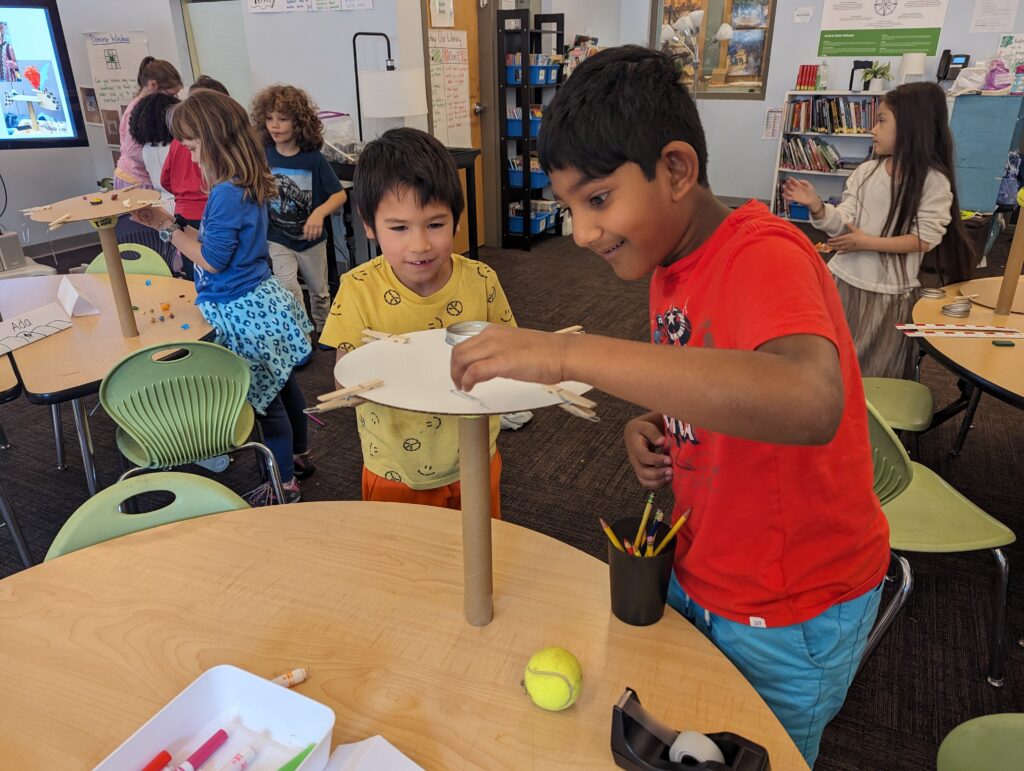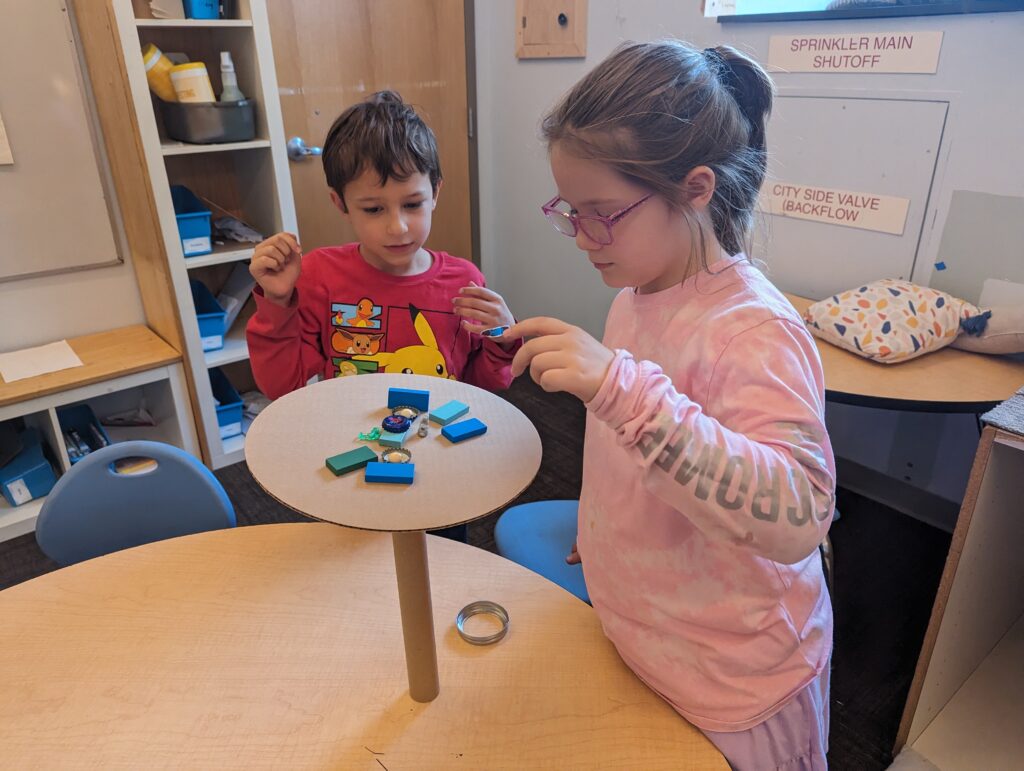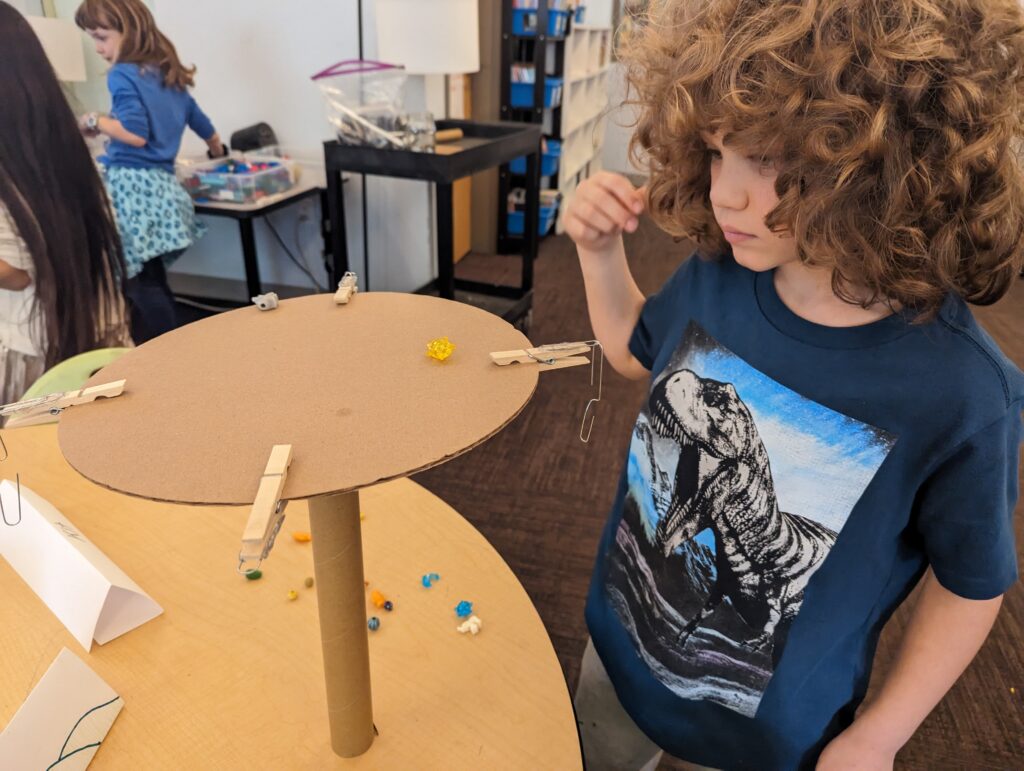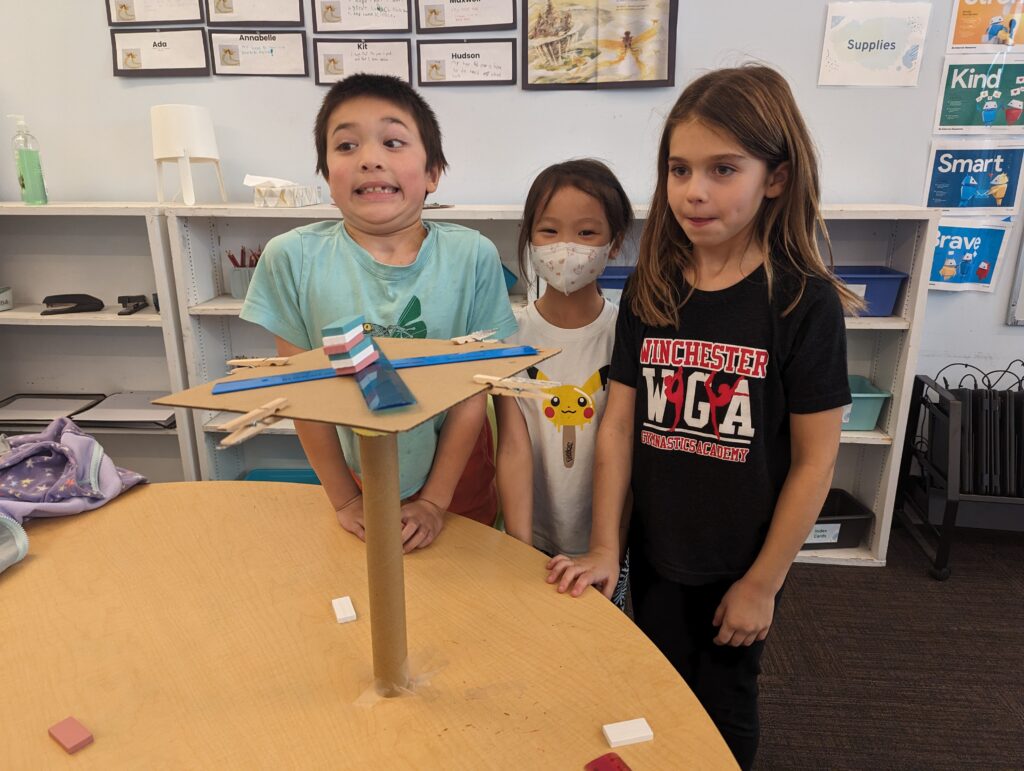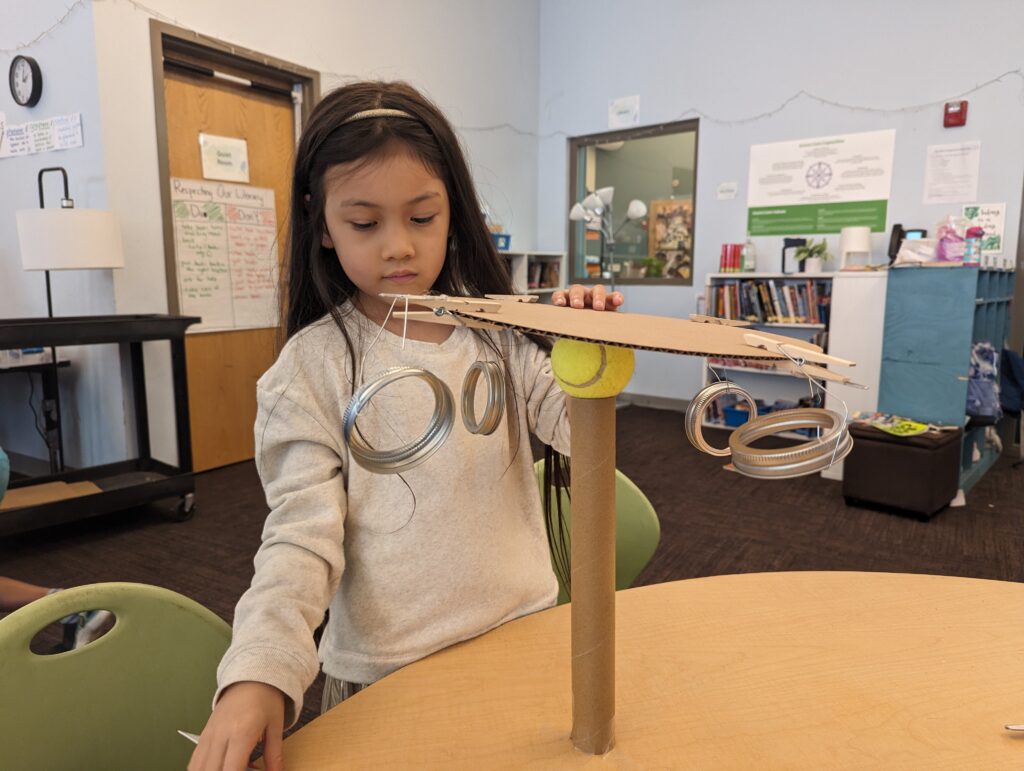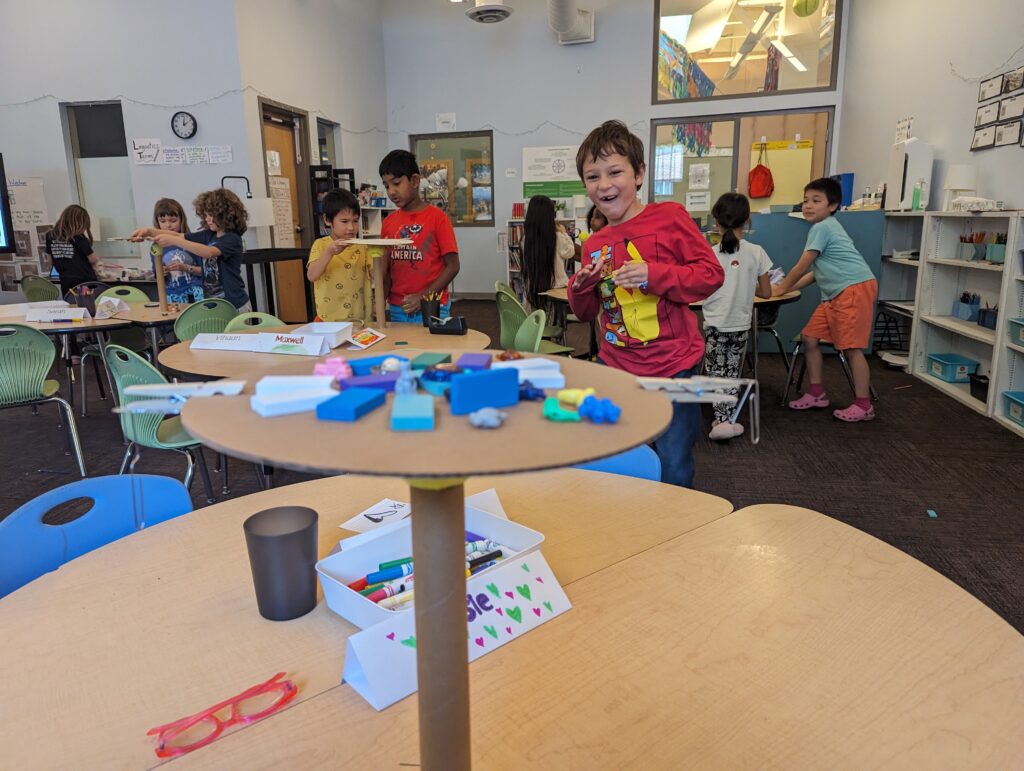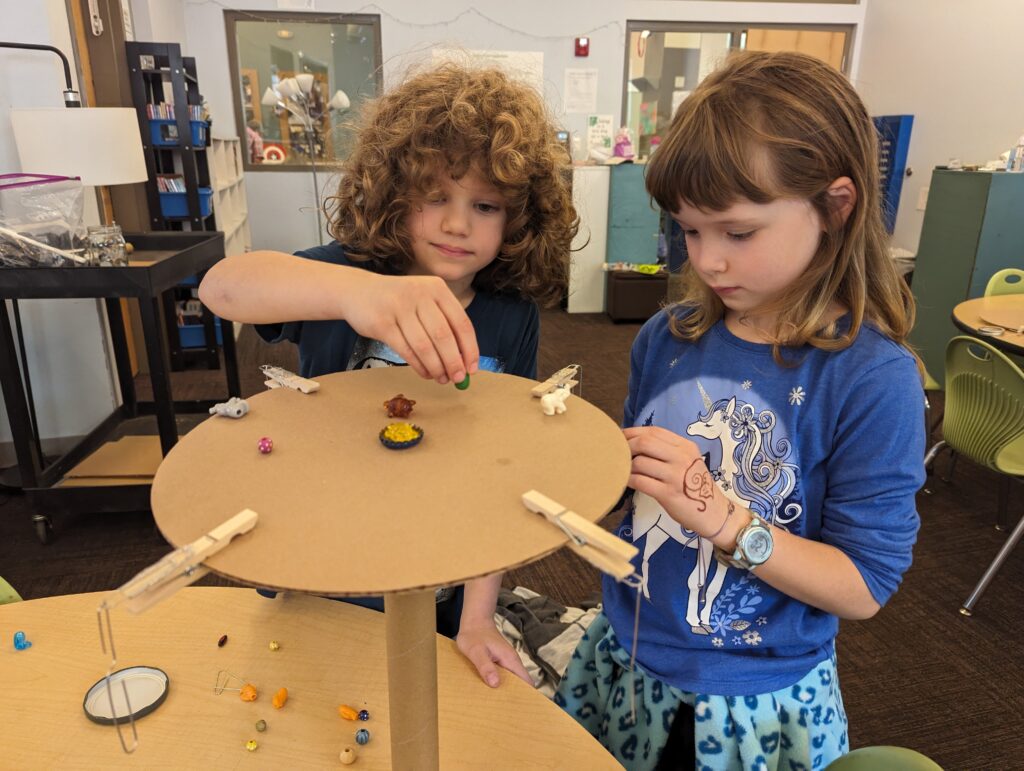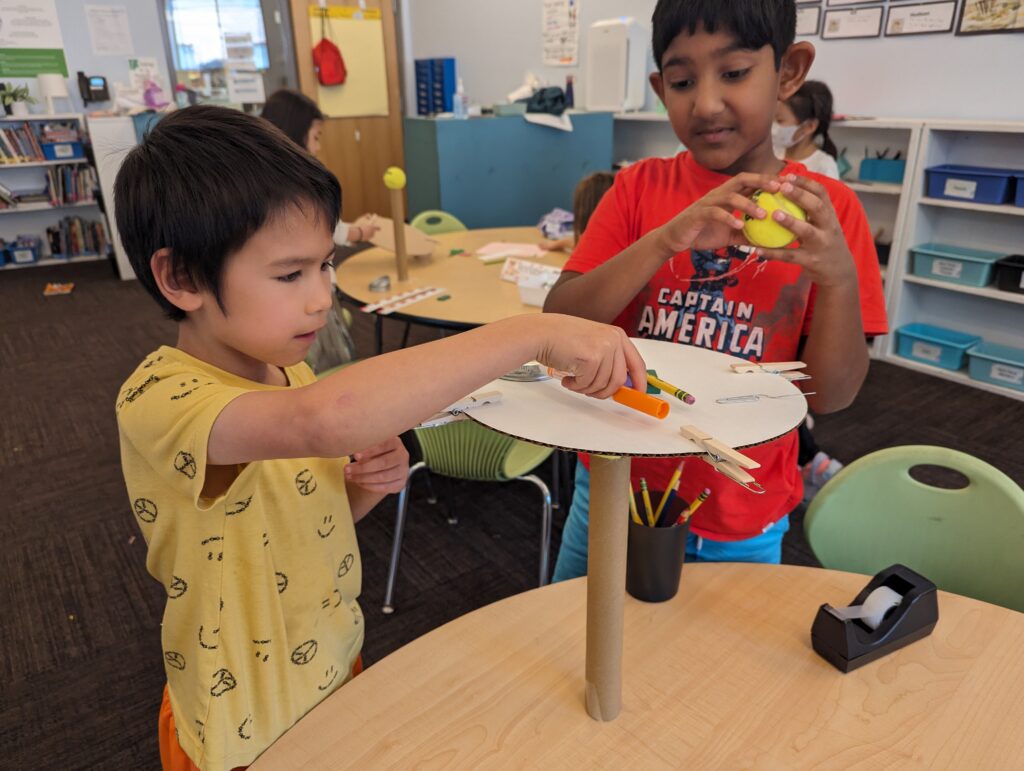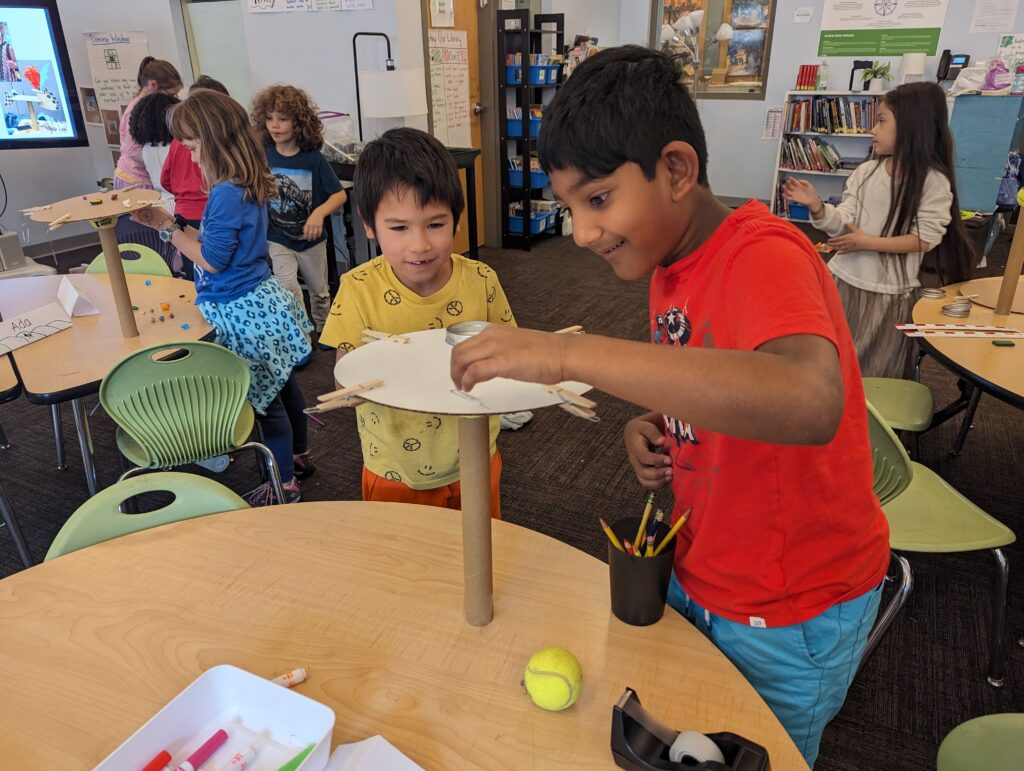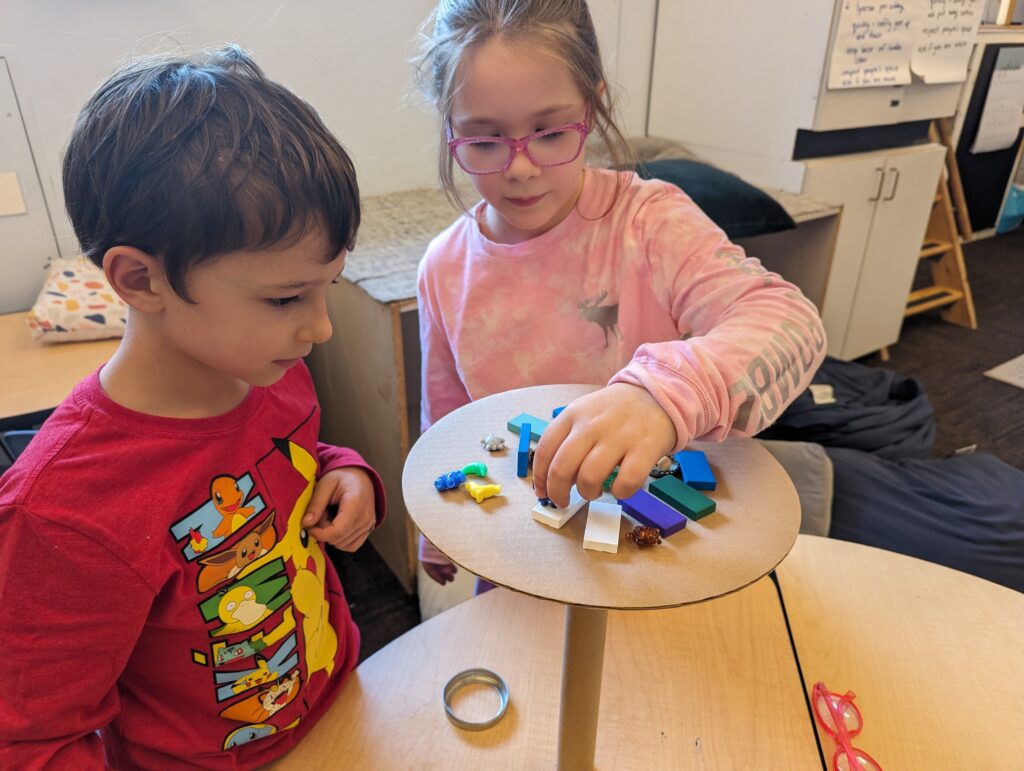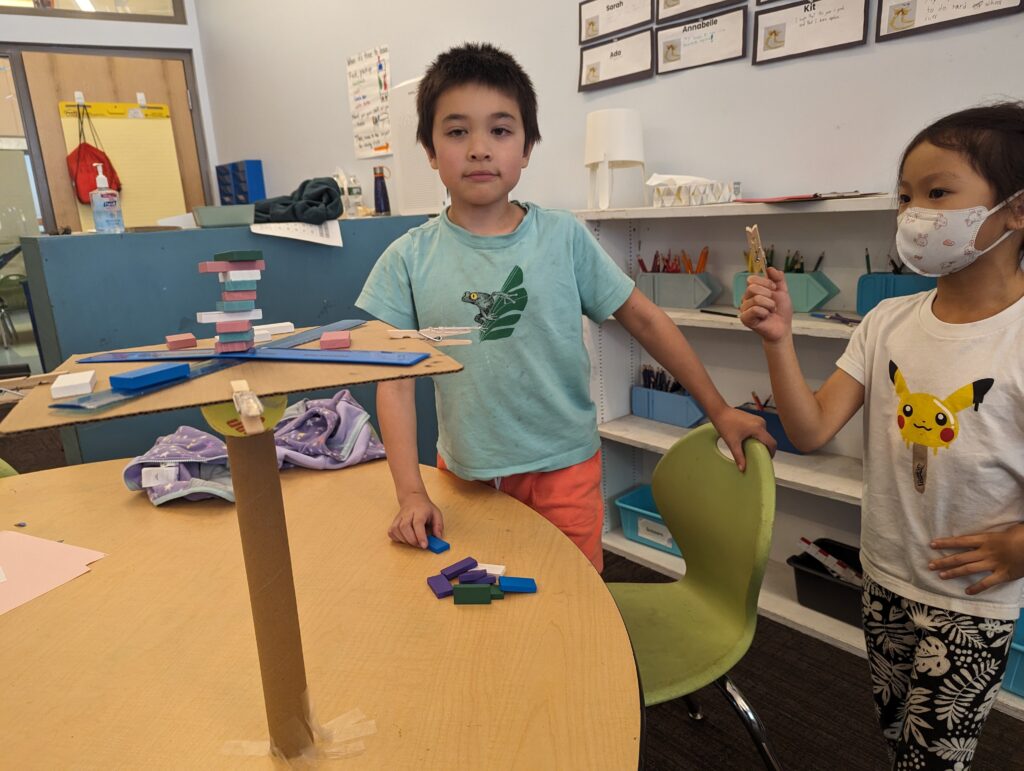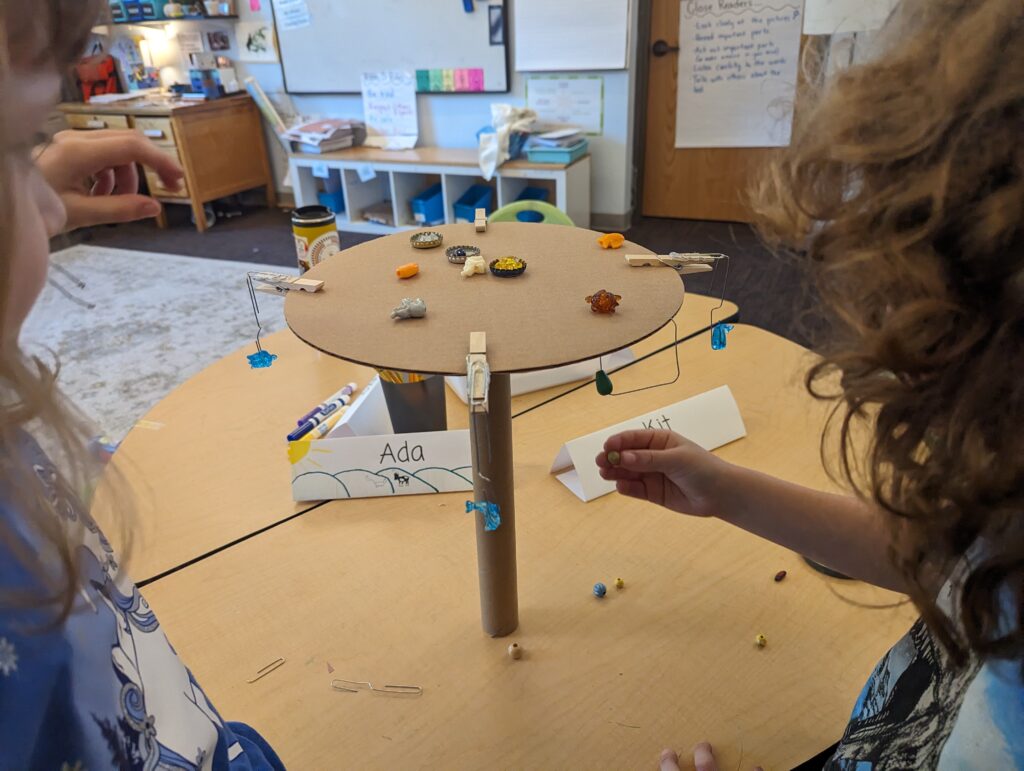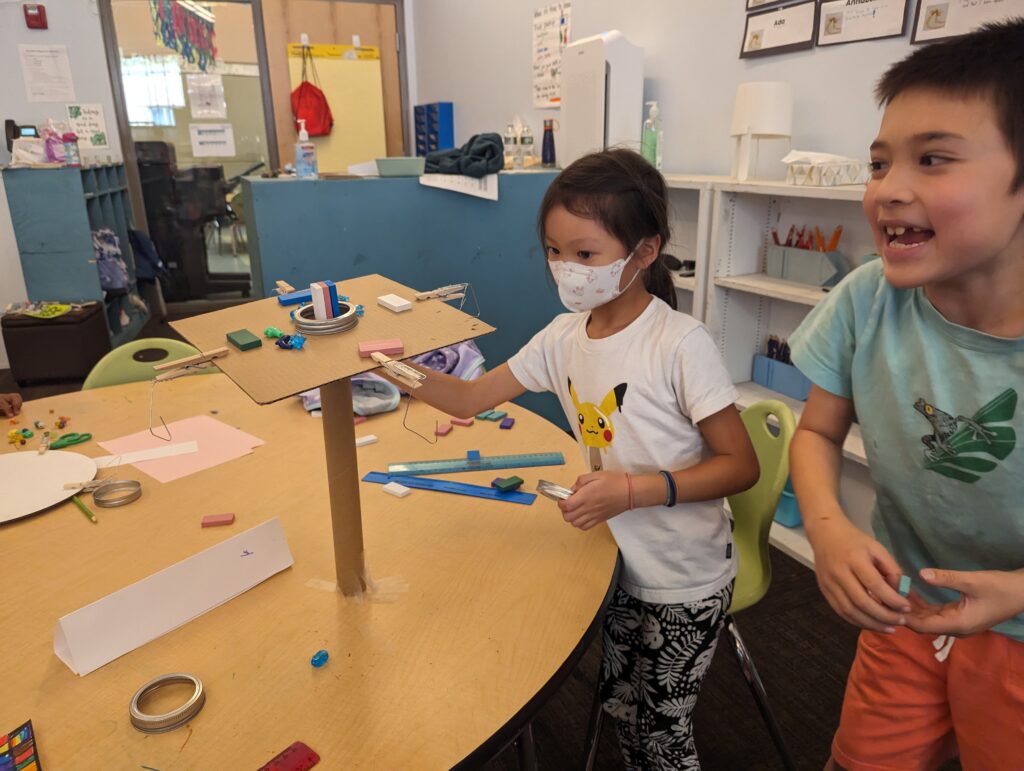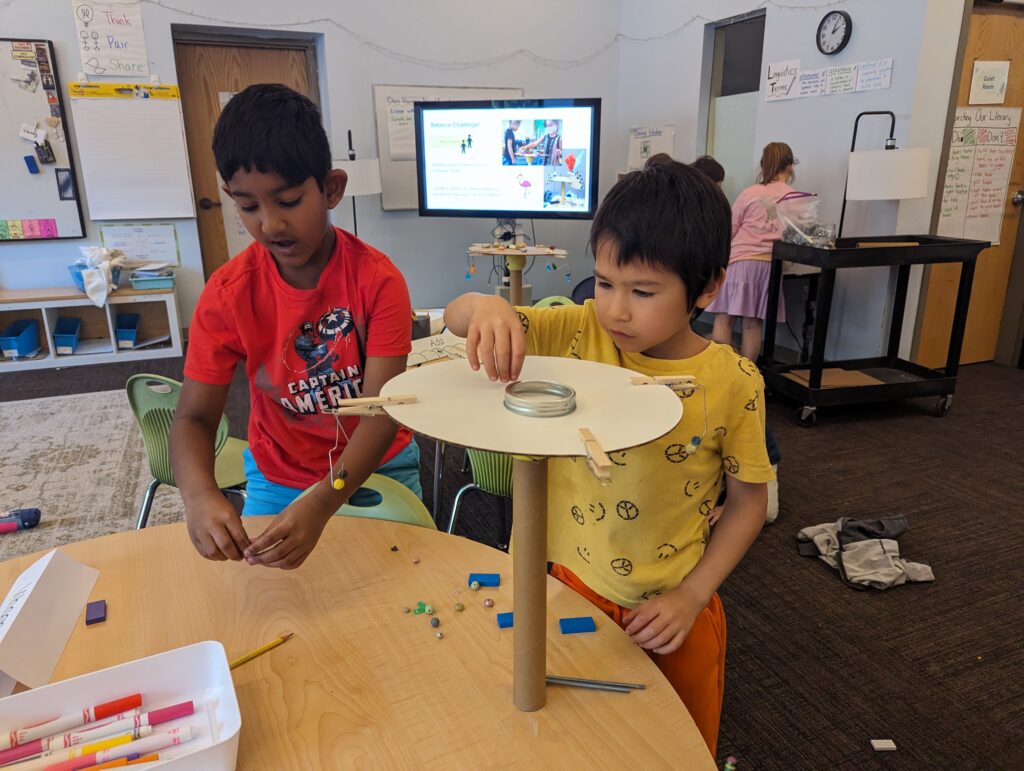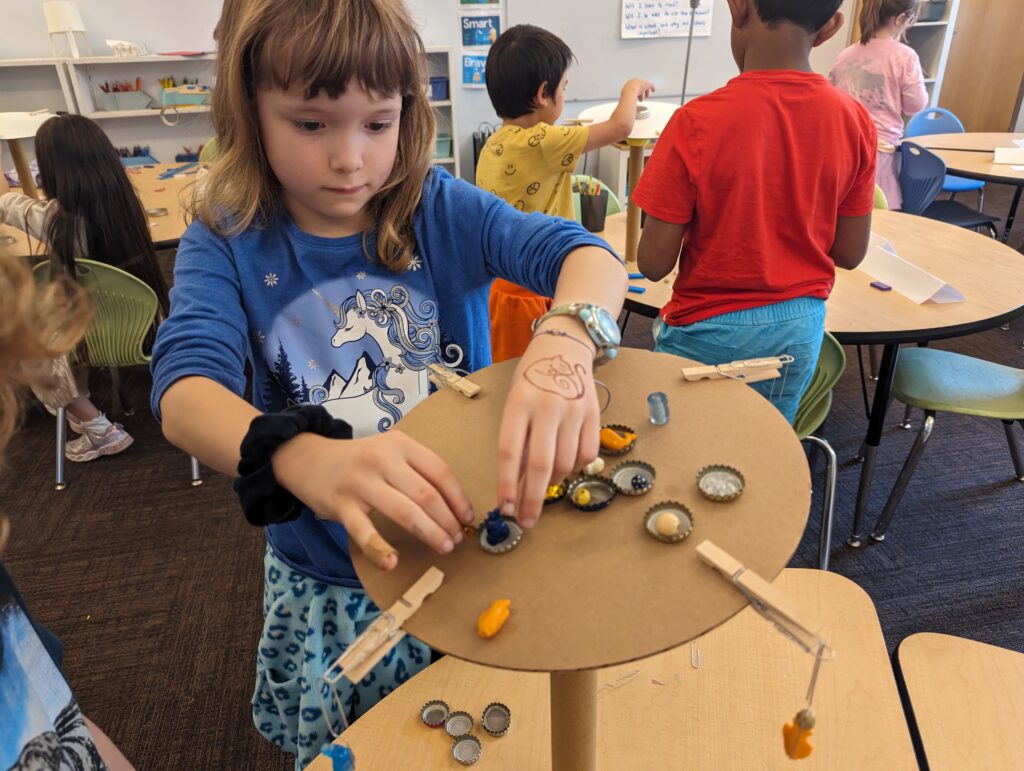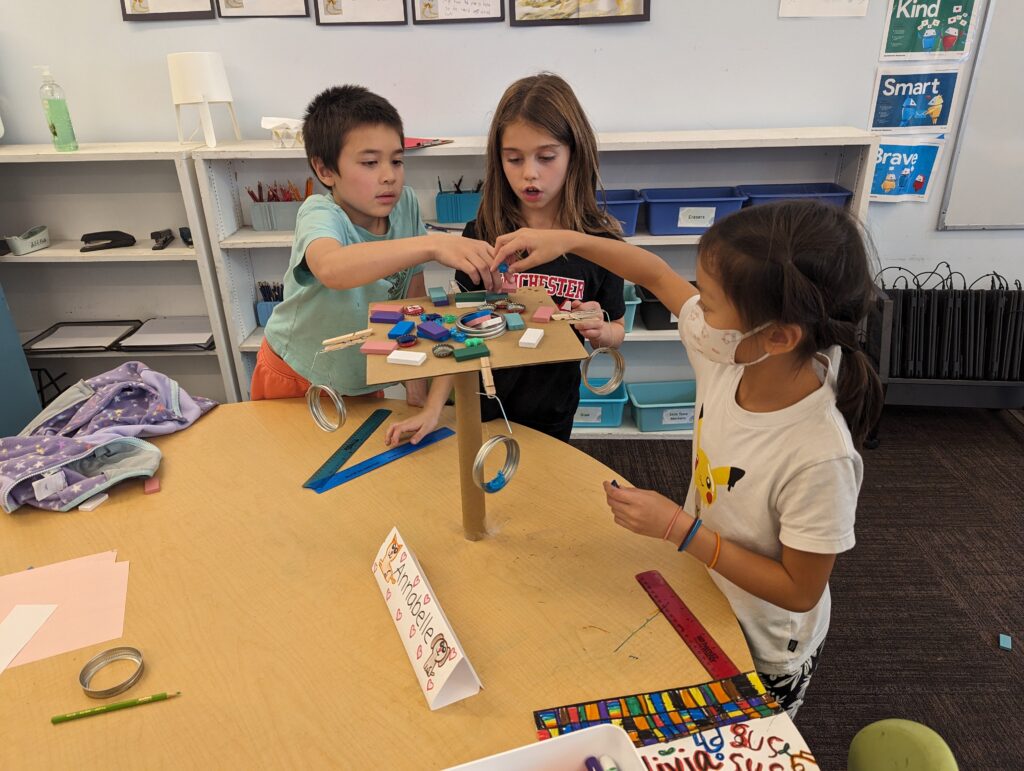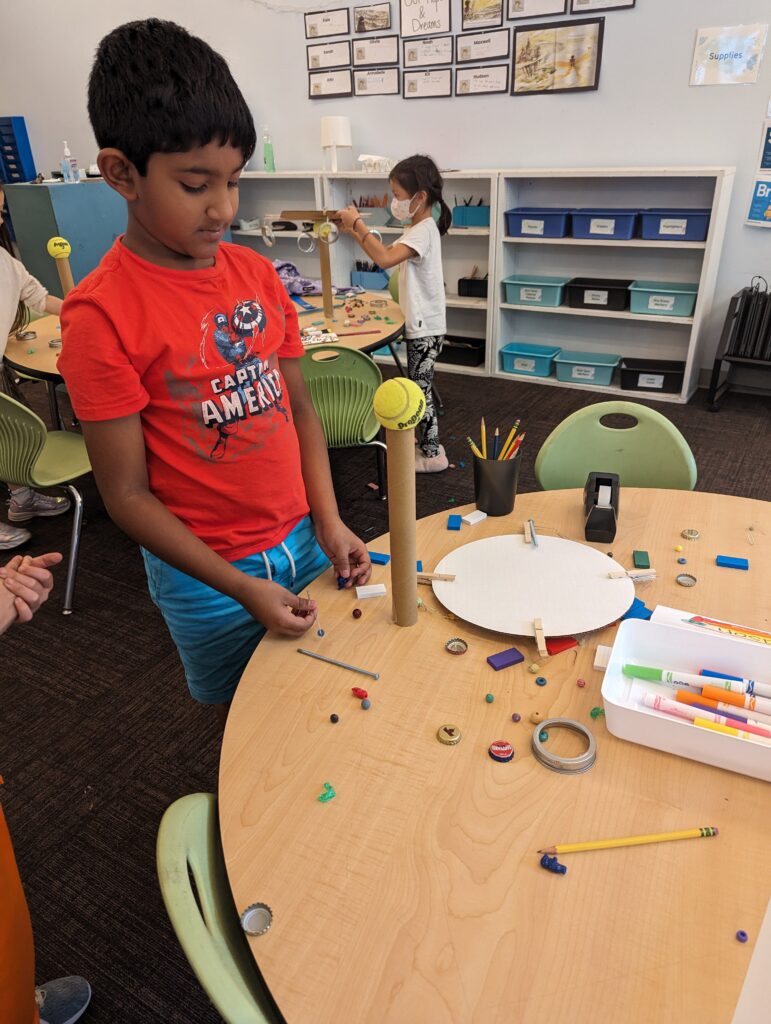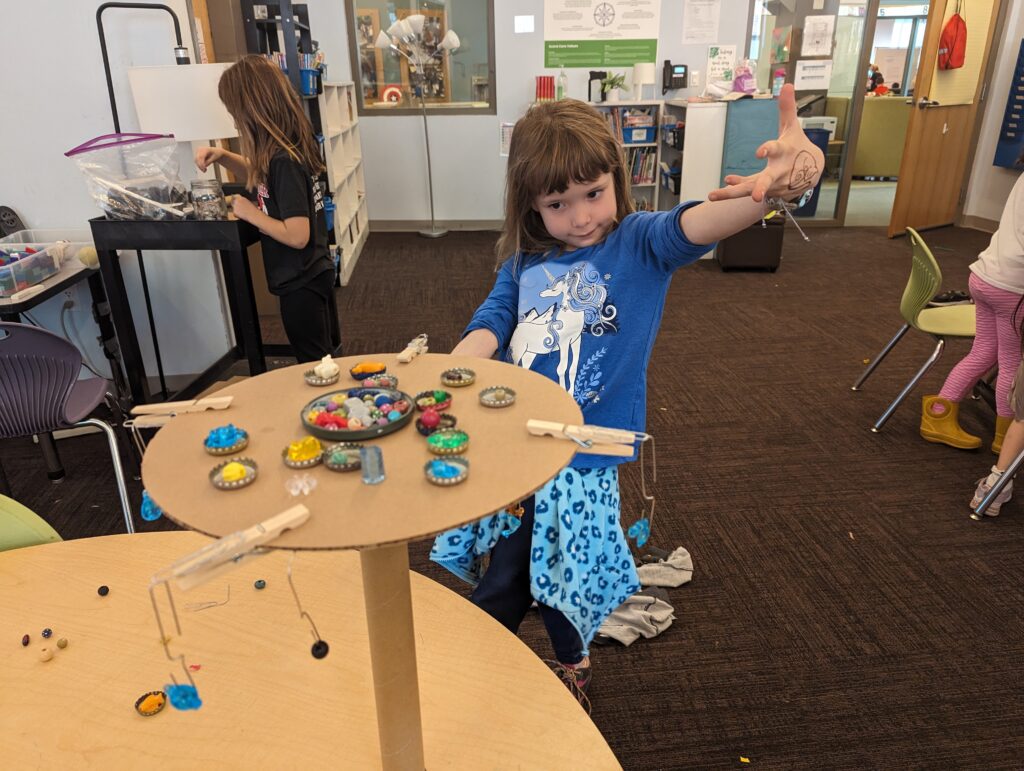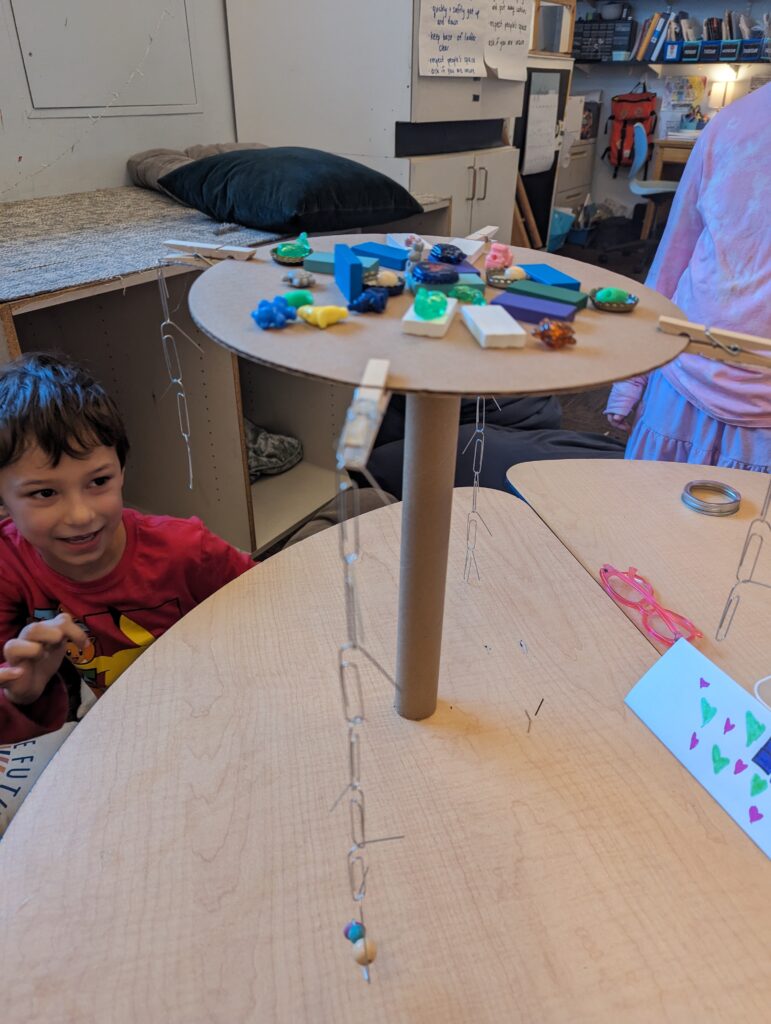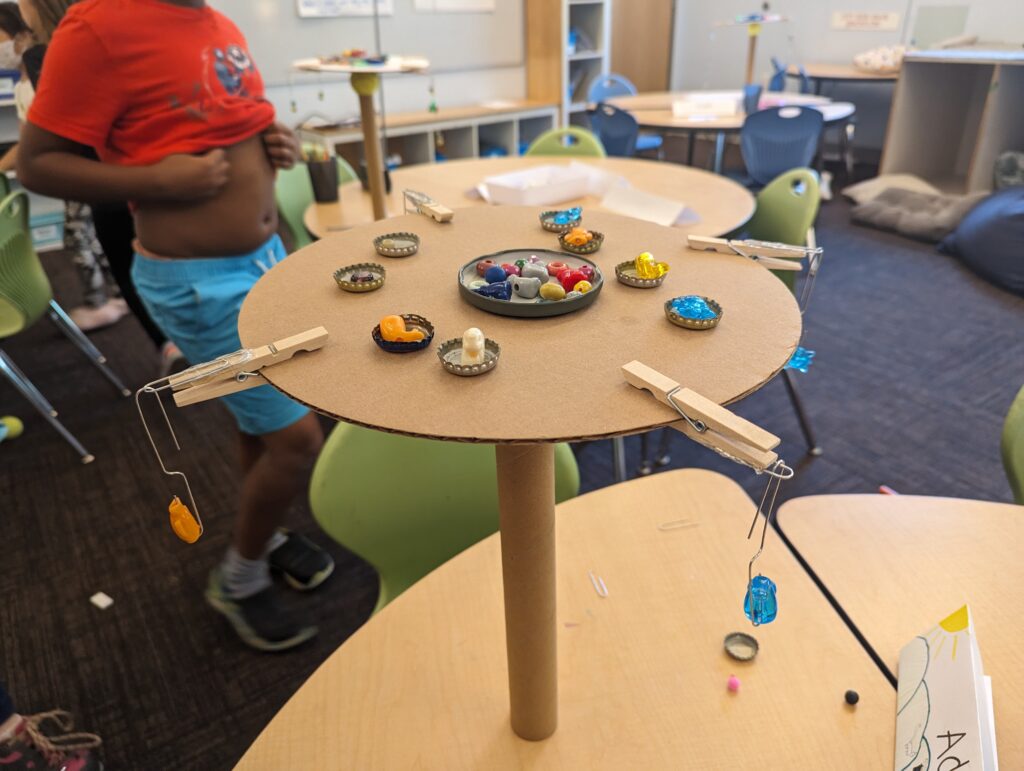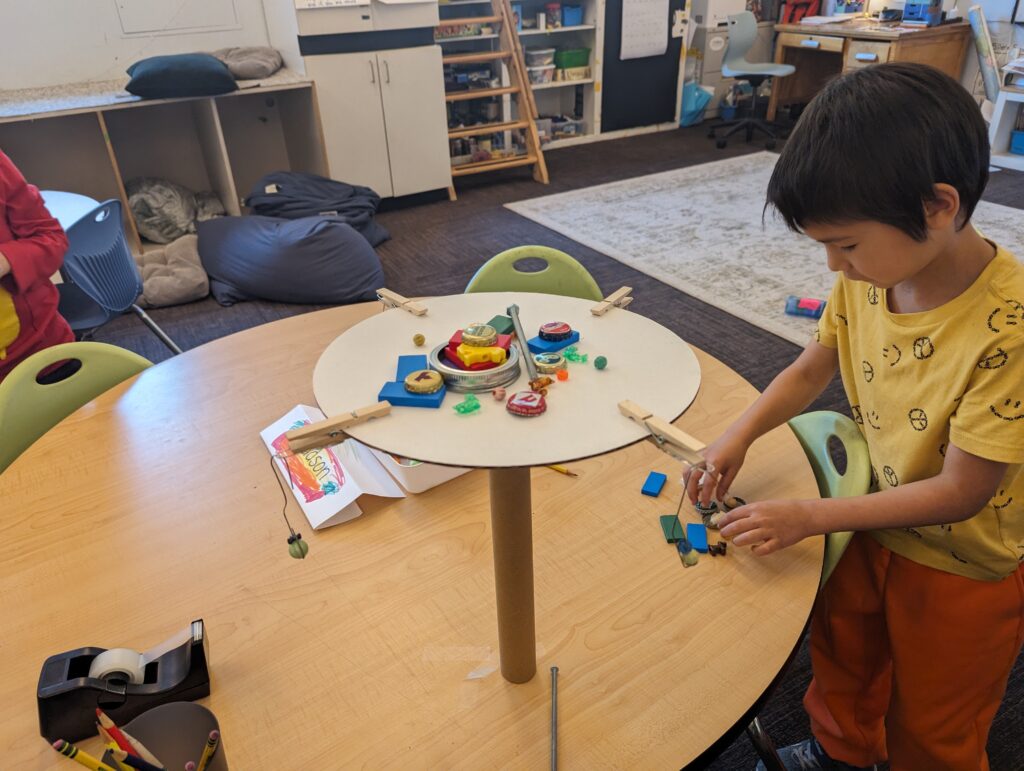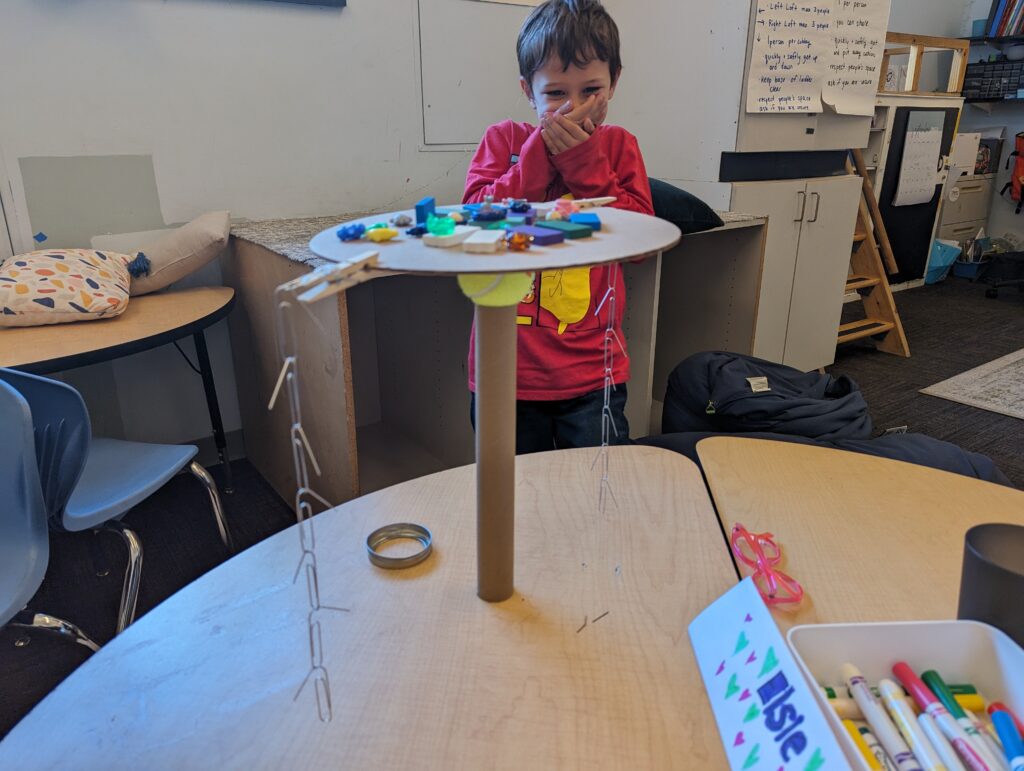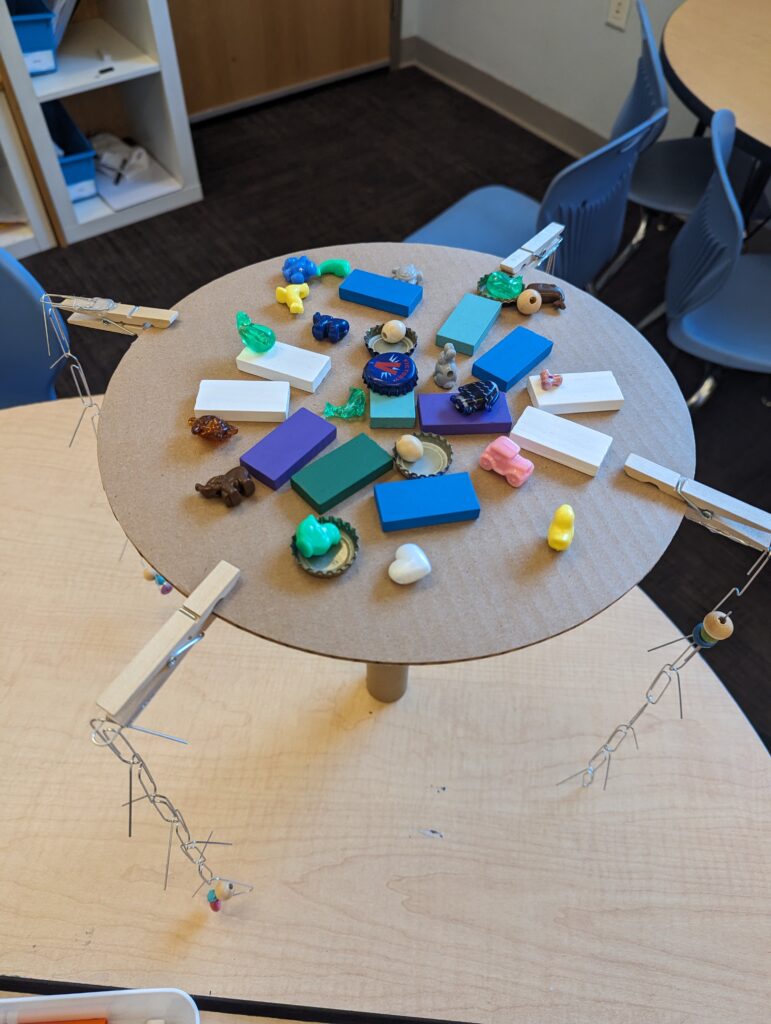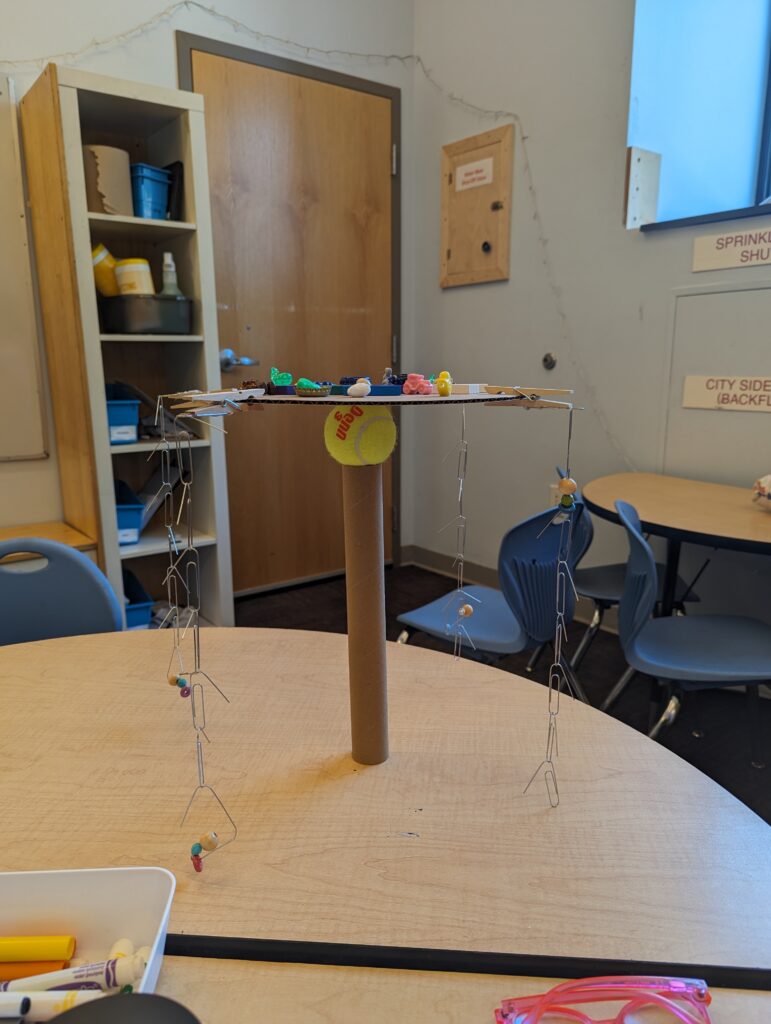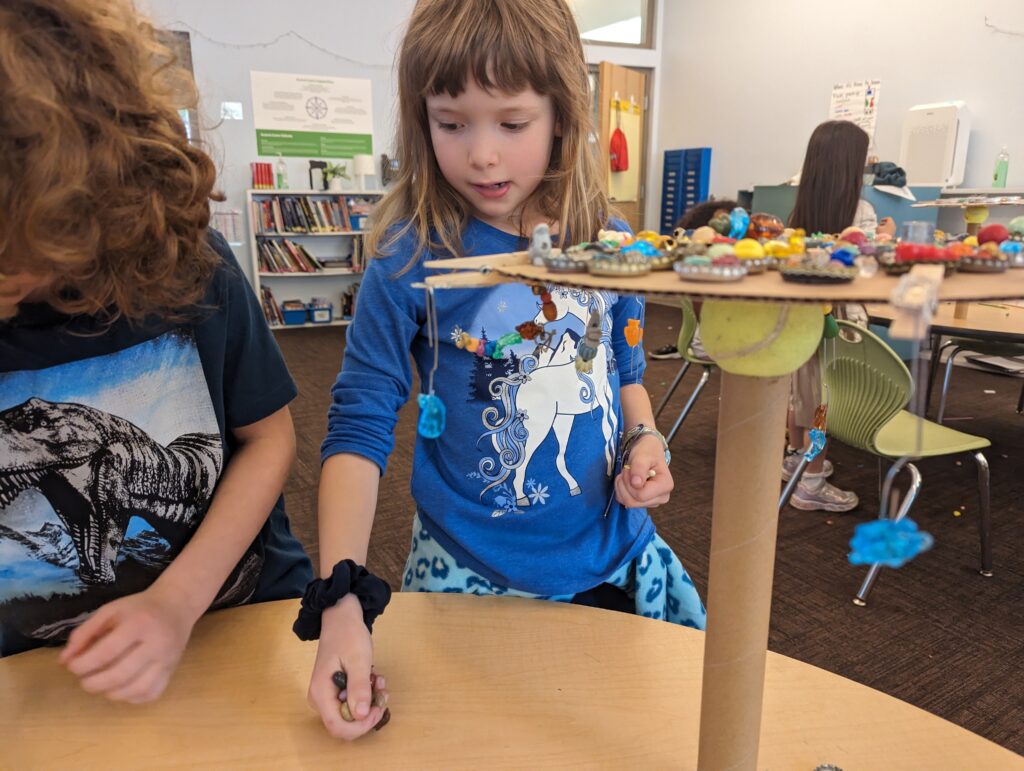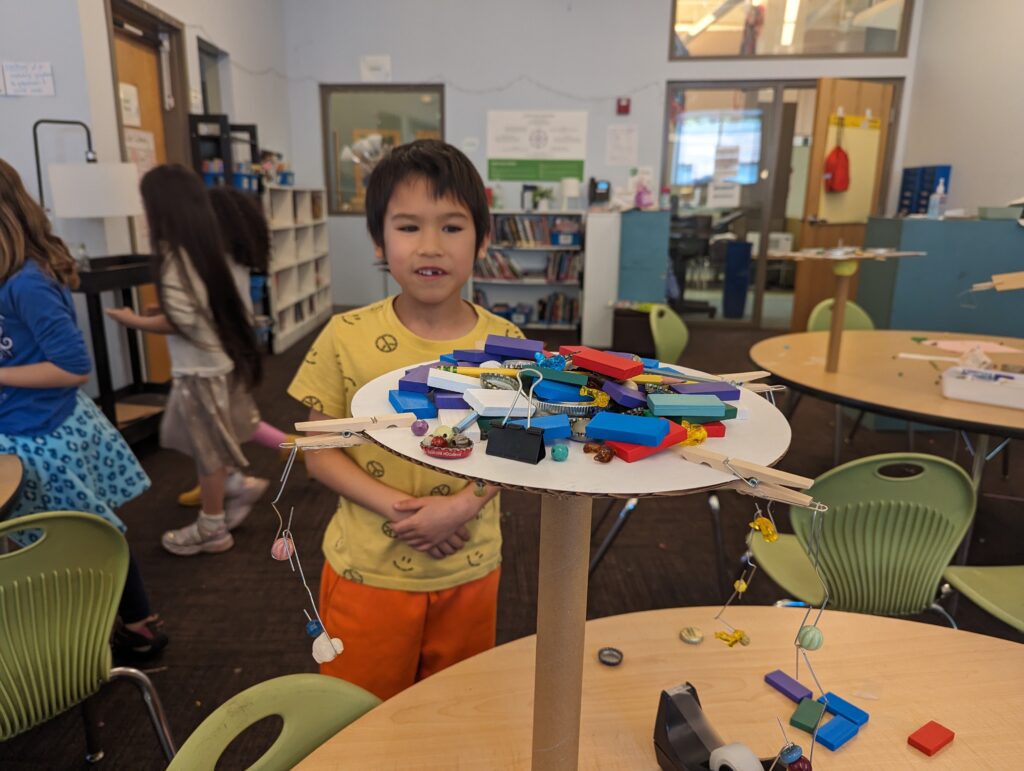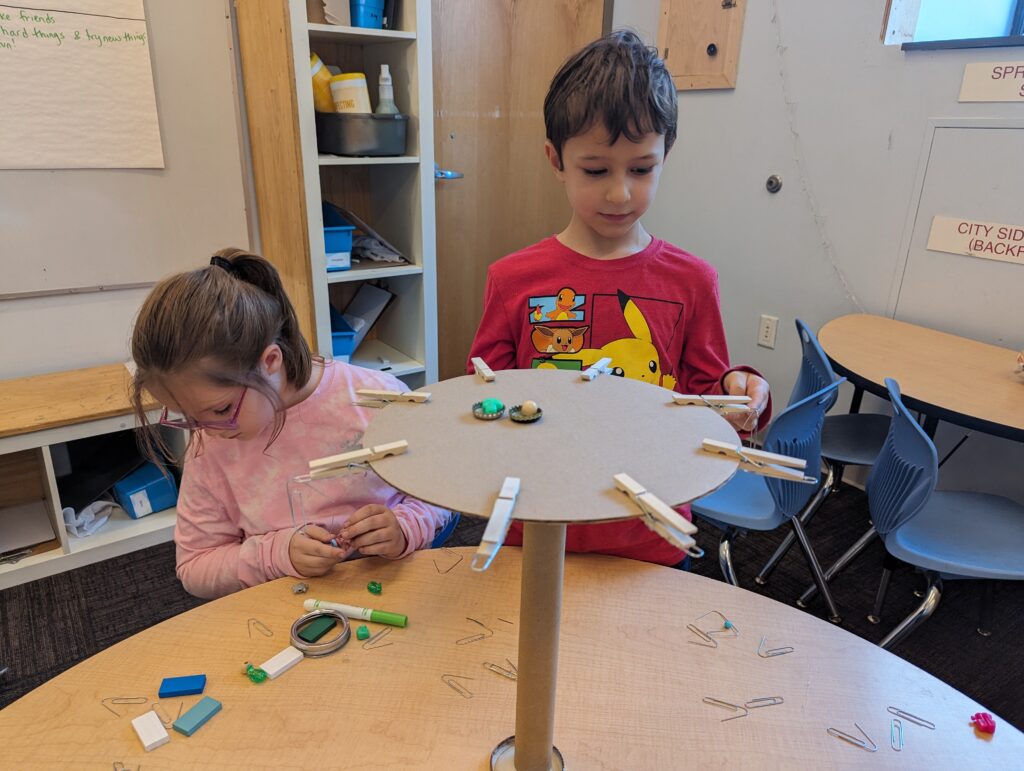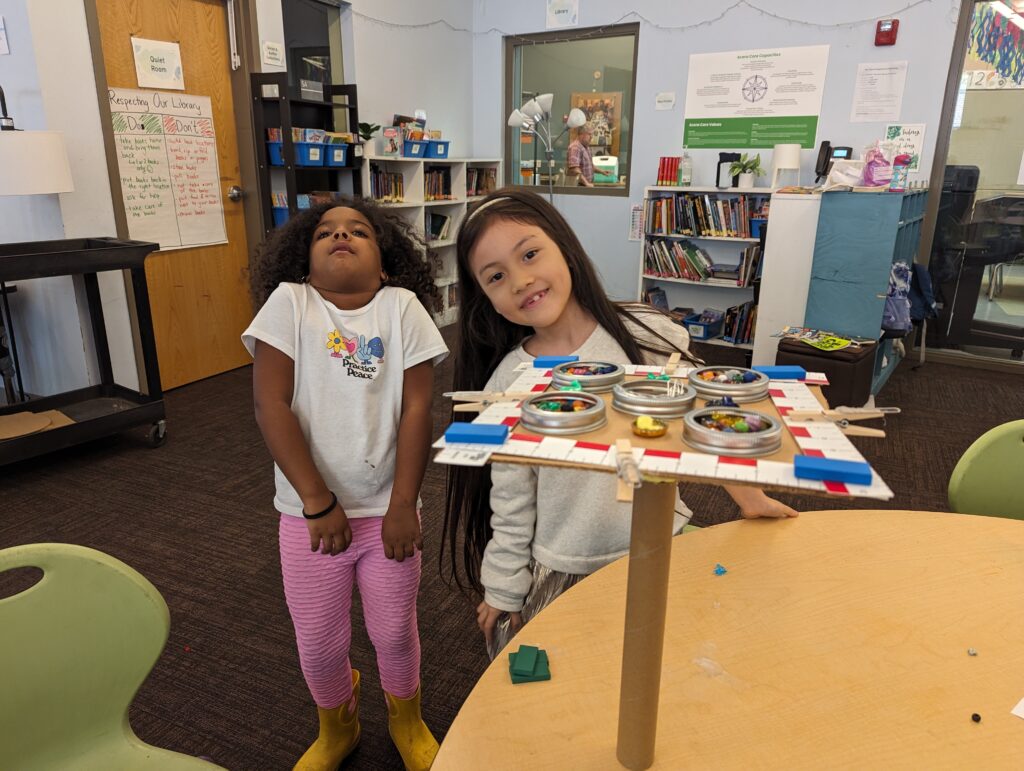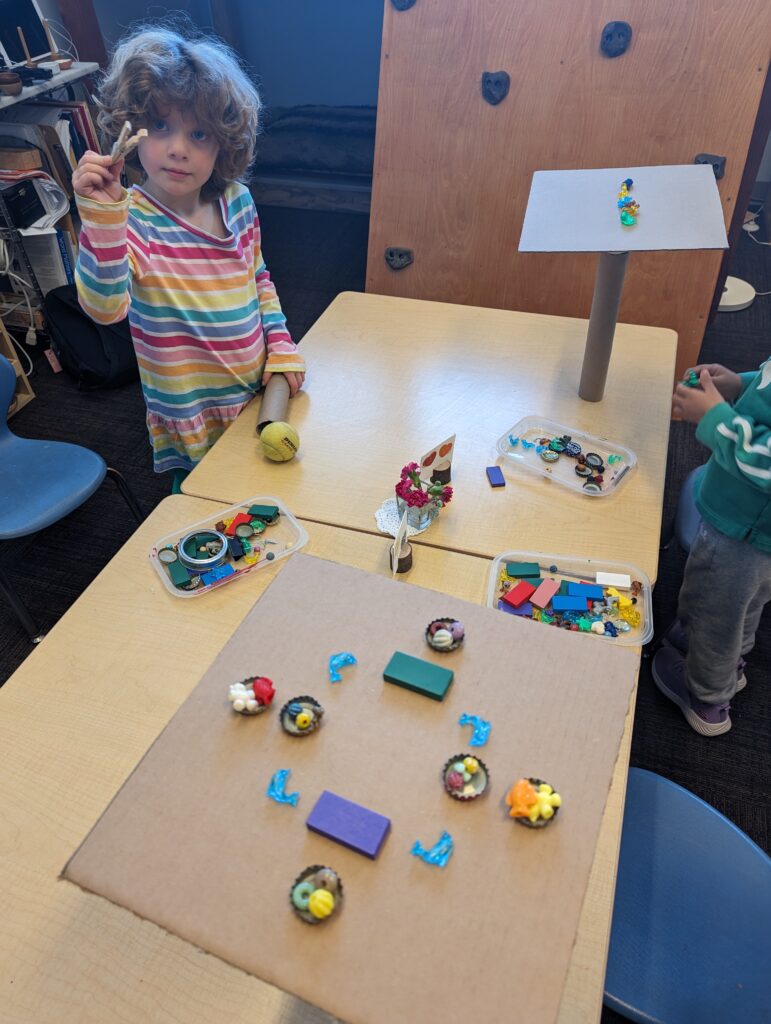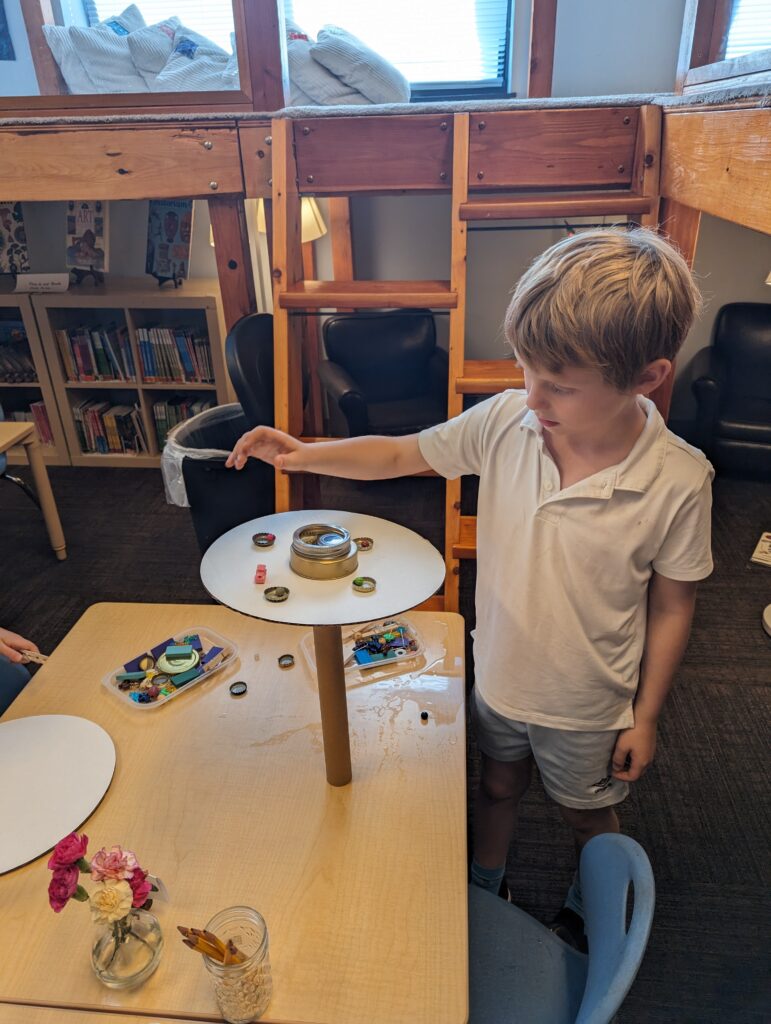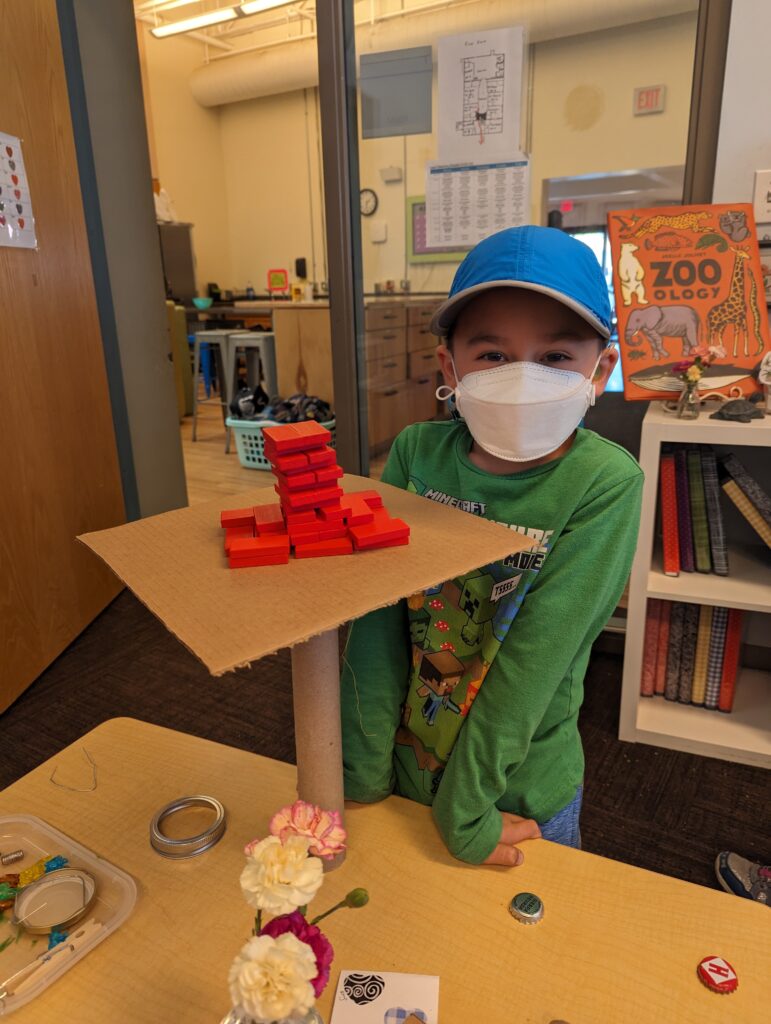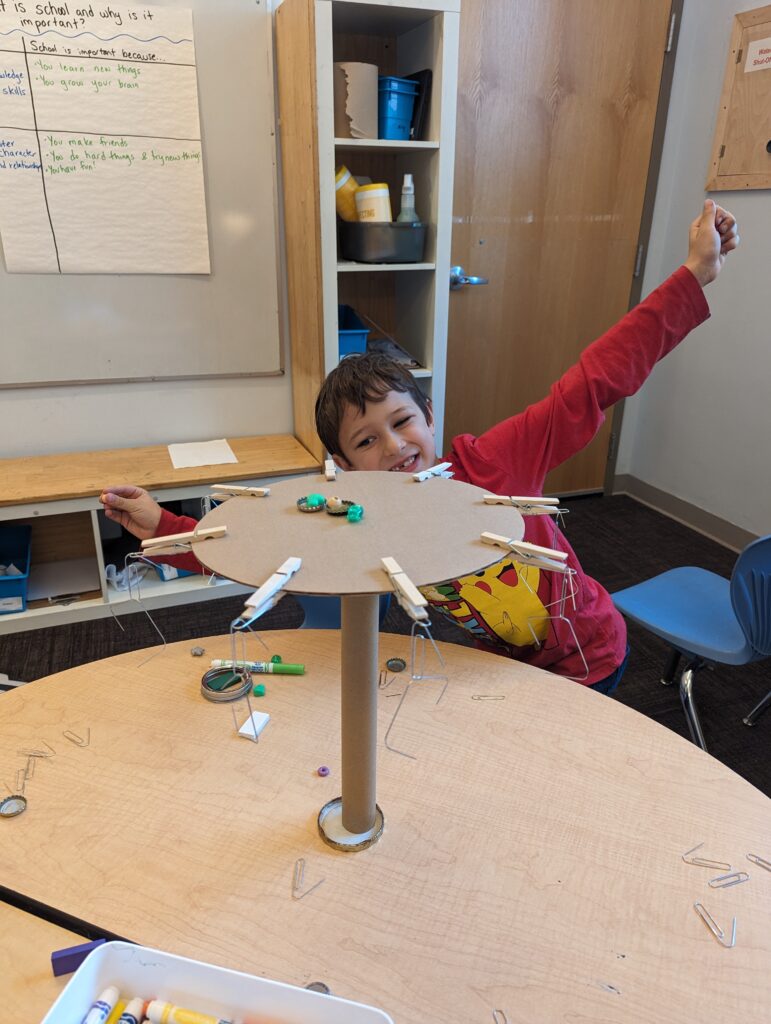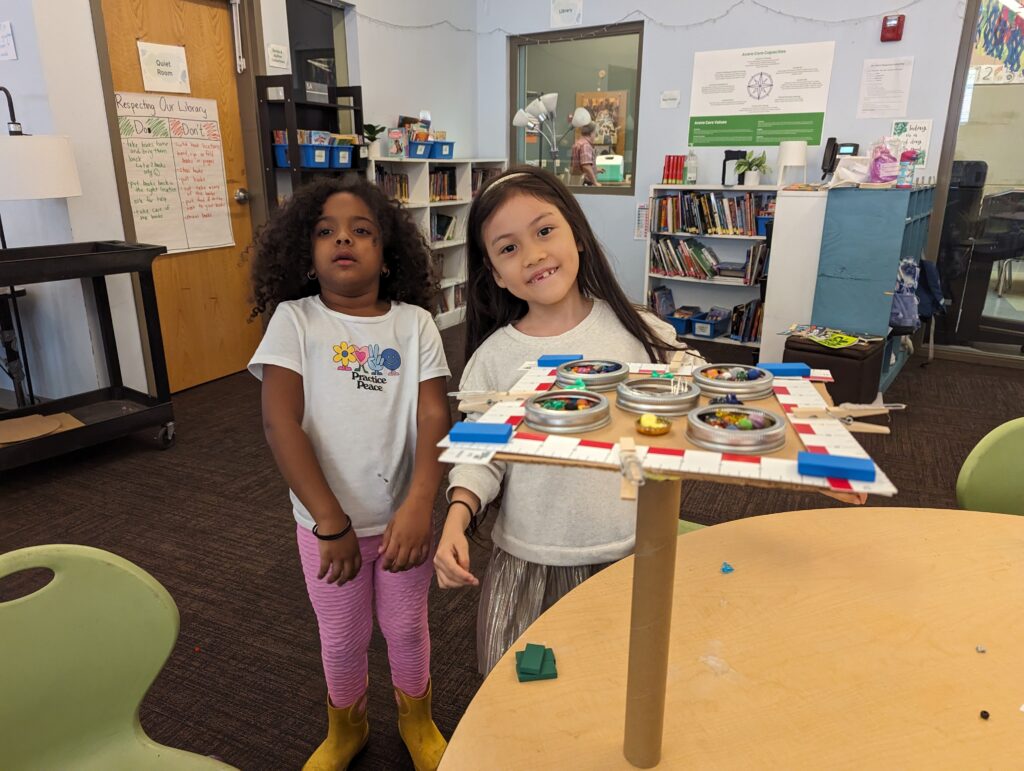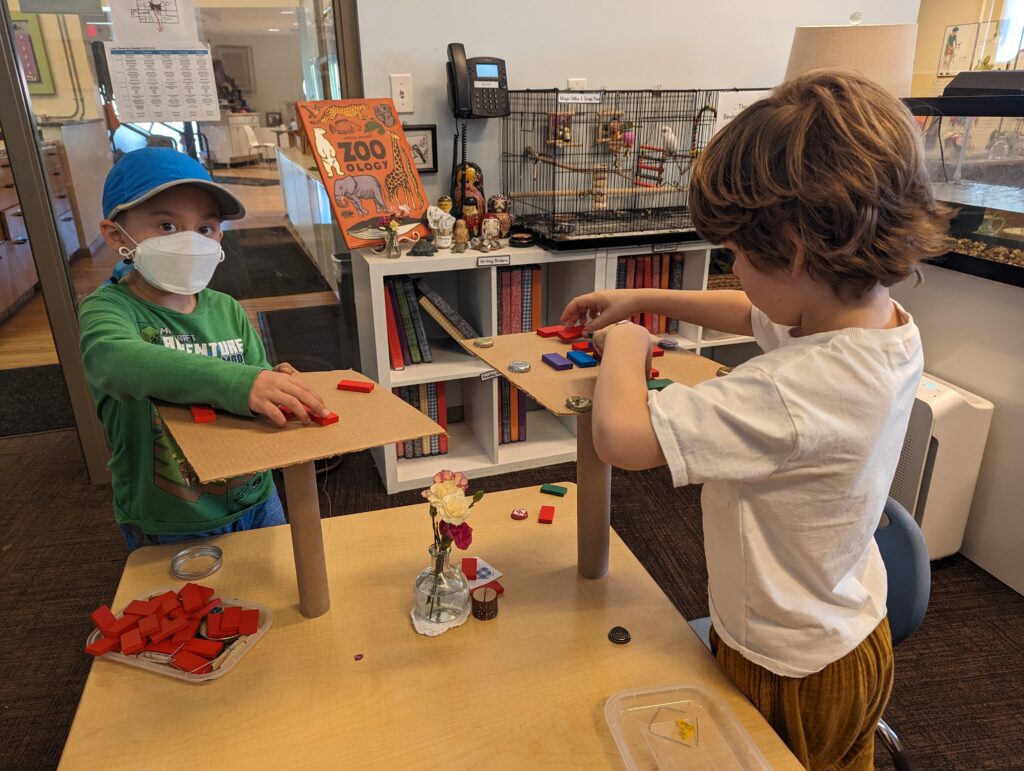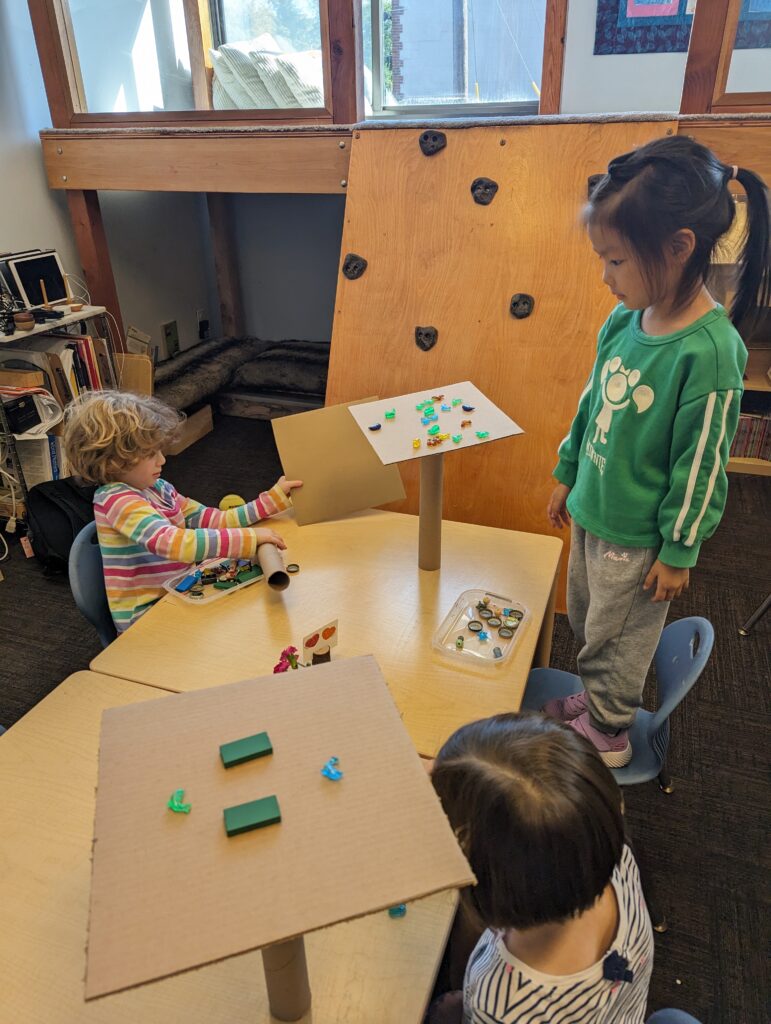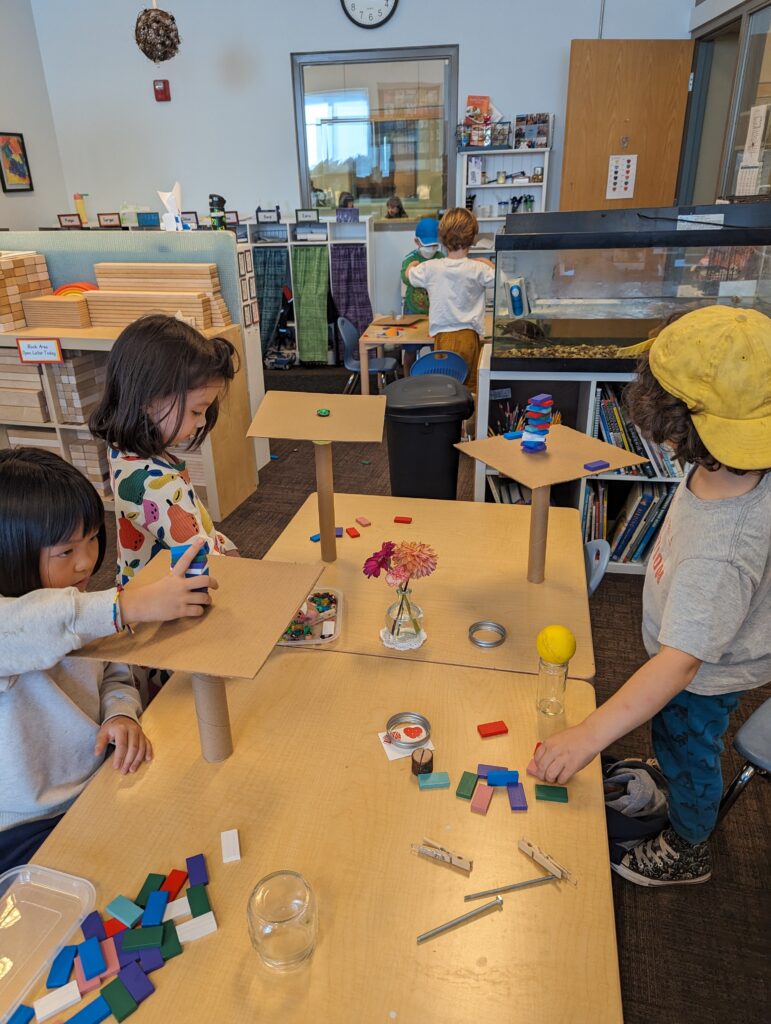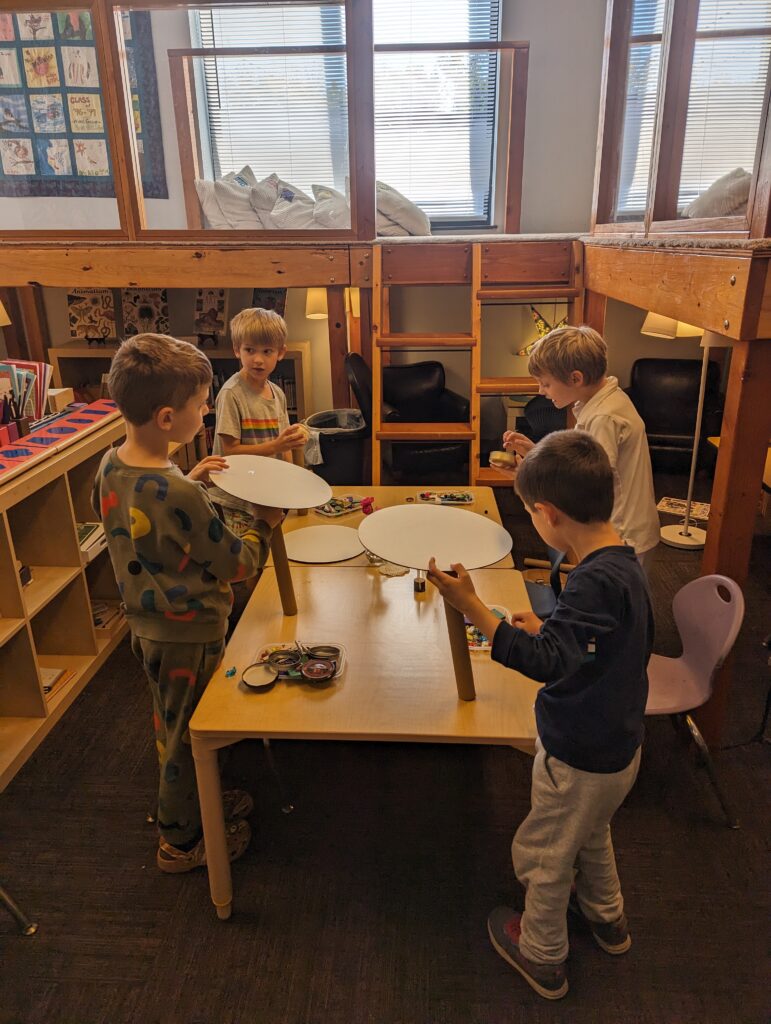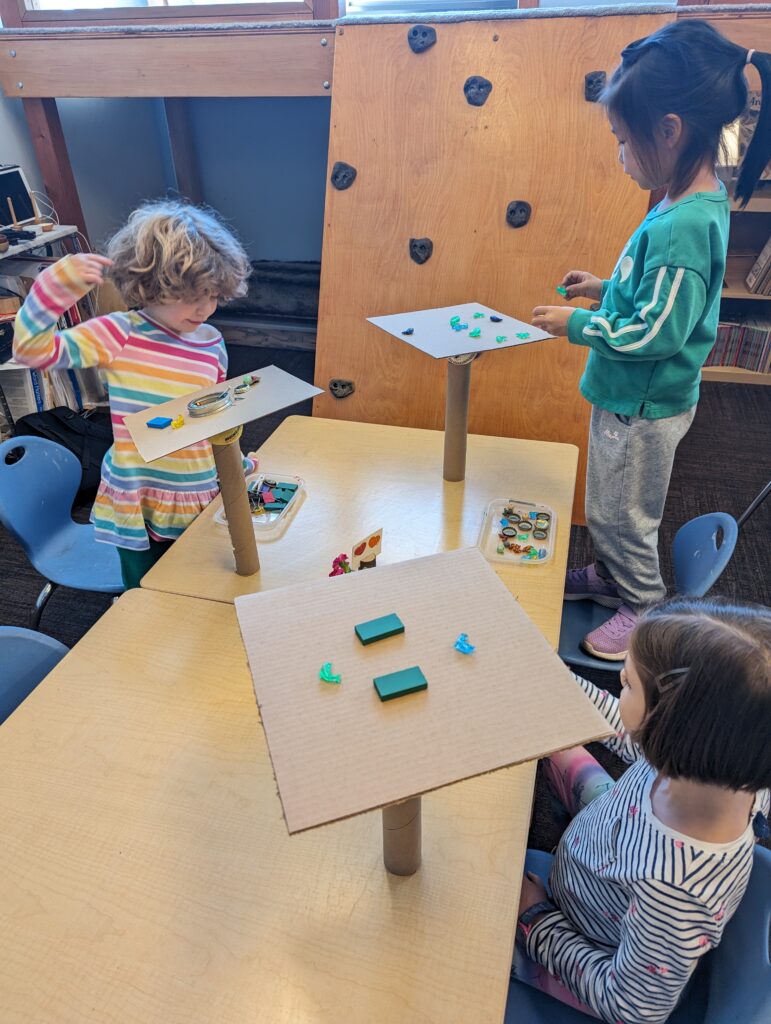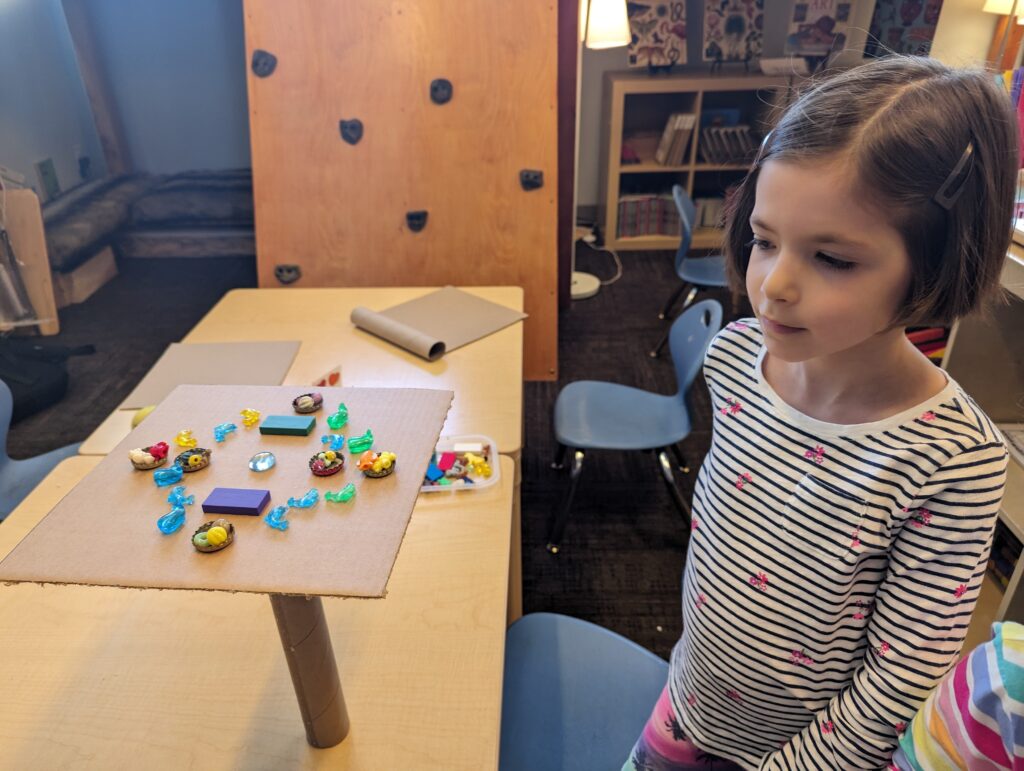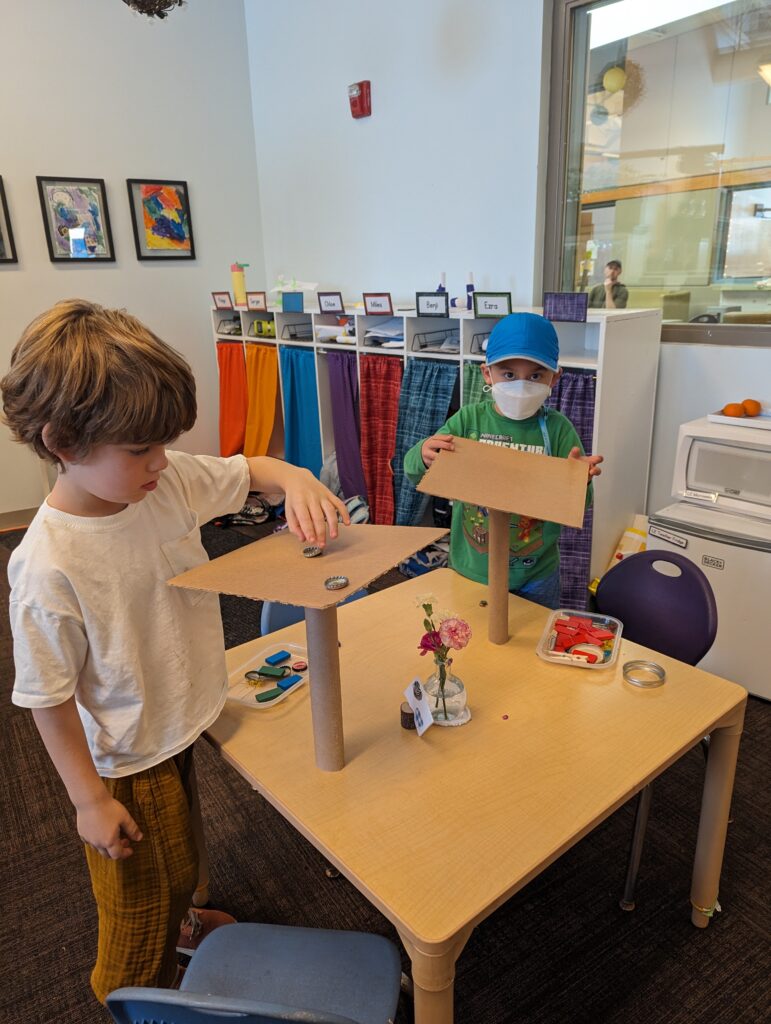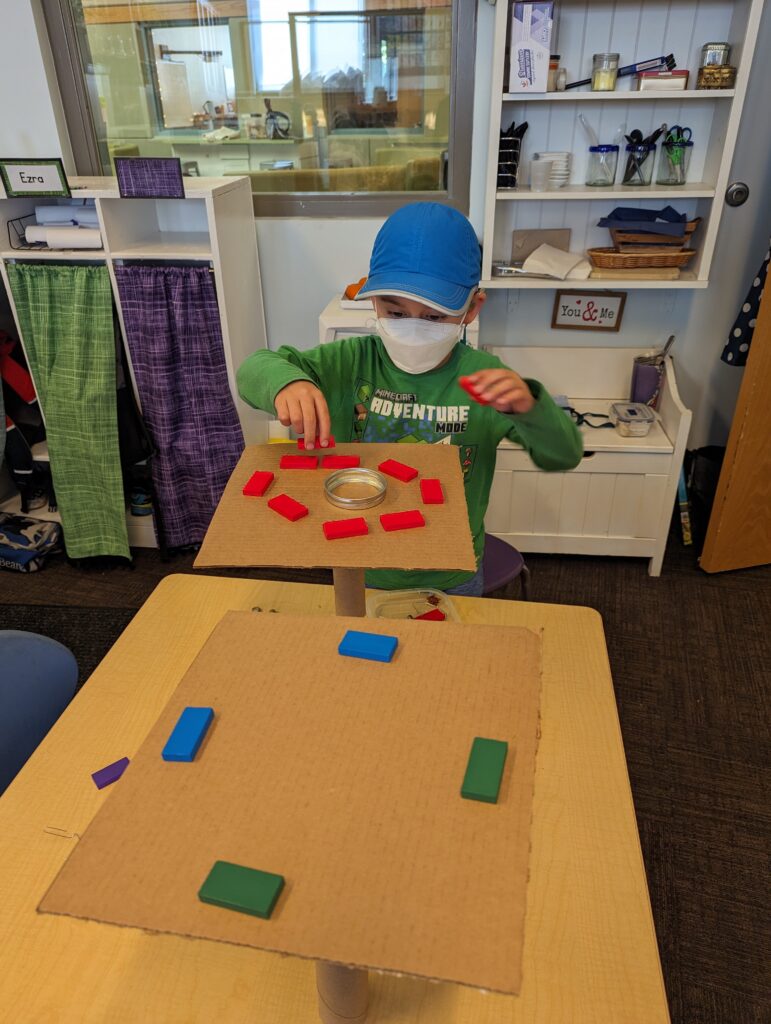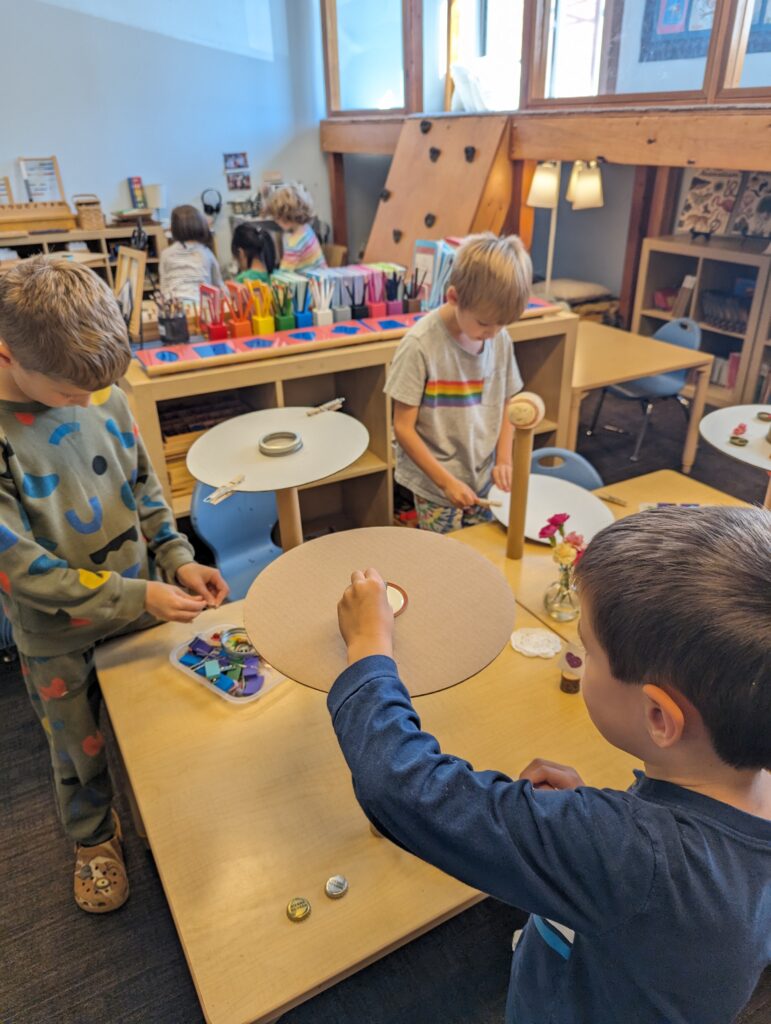Post by Alison Earnhart, MakerSpace Maven
I always like to take time during the Autumnal Equinox to reflect on balance. This past September 23rd, I was especially focused on exploring the difference between active stabilization (what your muscles do while you try to balance on one foot) and passive stabilization (what rocks do once you’ve stacked them – they don’t have muscles to stay in place!). I found a fantastic article on the scientific study of how flamingos manage to stay balanced on one leg even while they’re sleeping, and it inspired me to bring a study of balance to Ms. Emilly’s engineering, since the animal kingdom is full of excellent examples of balance (so are natural land formations too!) and their class theme is Wild and Free. I loved the classroom results so much, I decided to bring it into my Room 1 activities as well, as we’ve been spending September studying basic architectural structures through the lens of paper. What started as a personal reflection on balance ended up being a three week journey with Acera’s littlest littles!
I found great inspiration for these projects from my friends at the Tinkering Studio, which makes its home inside the world-famous Exploratorium in San Francisco. They have a whole suite of project ideas to aid people in the exploration of balance, and I had a tremendous amount of fun using the tools and resources in our MakerSpace to create some of their more popular suggested items. I started with their balance tables, the following week I shifted to balance beams, and then this past week we finished by creating balanced and stacked sculptures with found materials out on the playground – a great exercise in breaking functional fixedness while enjoying the perfect autumn weather!
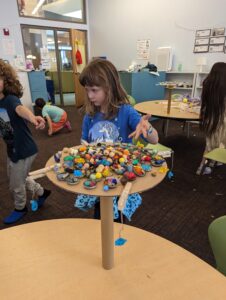
Ada shows how many things she was able to balance on her board. The board is precariously perched on a tennis ball!
Each of these explorations was outrageously fun, but also deeply educational on multiple levels. Intellectually, these activities allowed students to really focus on what kinds of situations allow balance to happen. When I used to work with 9th graders in my engineering classes in Texas, I was routinely dumbfounded by how these teens had virtually no intuitive understanding of how structures worked and how to balance something. They would design devices that were clearly unstable, and not realize it until they attempted to build it. While I roll my eyes at most adults who will shake their fist and talk about “kids these days and their darn video games”, I will agree that most young people don’t get enough time to simply interact with their physical world in meaningful ways that allow them to internalize how basic physics works.
In addition to giving students quality time to get acquainted with physics, it also allowed for focused practice with their fine motor skills. I noticed a huge difference between the physical abilities of Ms. Emily’s students when compared to Ms. Jen and Ms. Lisa’s students, and it was fascinating to see how just a year or two of physical growth can impact how students can use their arms, hands, and fingers to manipulate small items in subtle ways. Anticipating this, I modified this study of balance for my Room 1 students, and gave them more one-on-one time with the balance boards to explore, practice, fail, and try again.
In both classes, I placed a huge emphasis on the celebration of failure, as things were constantly falling down. Each time a balanced structure fell, I congratulated students for trying new things and learning something about how balance works. If a structure hadn’t fallen for a long time, I encouraged students to get more adventurous and try a wild idea that might possibly backfire. This kind of fearlessness is exactly what I want to cultivate in all my students, and I’m proud to say that everyone in both classes built, failed, and built again with growing confidence and enthusiasm.
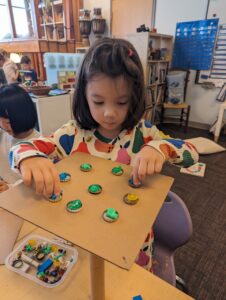
Paige discovers the role that symmetry plays in getting things to balance correctly.
After our studies, I asked students to reflect on their experiences. I framed the reflection in terms of “What advice would you give a friend who was about to work on these projects, knowing what you know now?” We collected student answers on the whiteboard, and their responses demonstrated a clear understanding of how balance works – far more so than the teenagers I used to work with at one of the most academically rigorous schools in the nation!
To an outsider, one might observe my class and think that these students were “just playing”. But physical play is absolutely essential to a foundational understanding of how the world works! These students now have a much better handle on what it takes to bring balance to a structure, and this understanding will serve them for the rest of this engineering course, and for the rest of their lives!
